Nikon Z8 vs Sony A7R V vs Canon EOS R5: Which camera is better?
In this battle of the mirrorless heavyweights, we're comparing three of the best cameras to help you decide which one you should spend your hard-earned cash on.
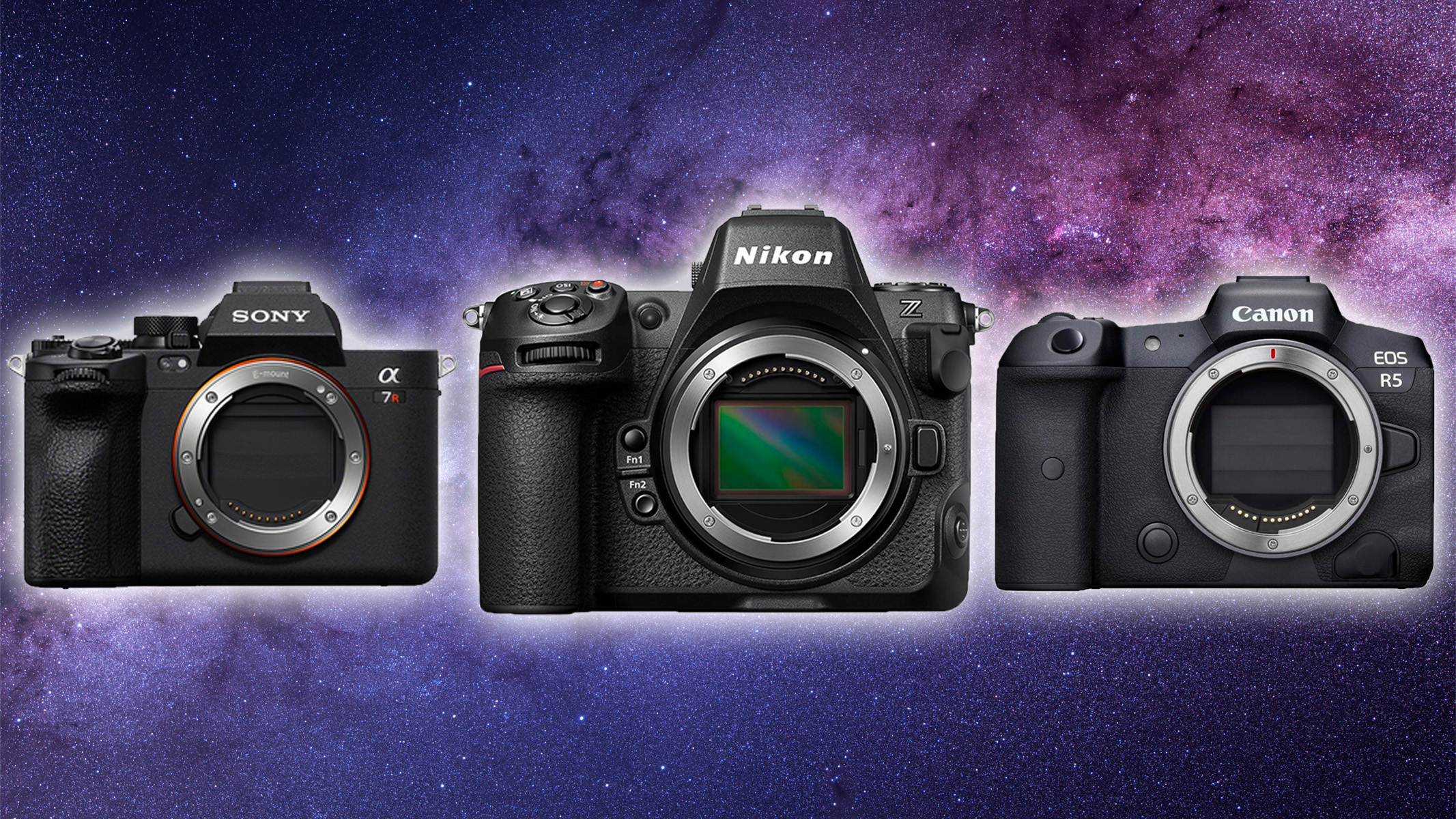
When it comes to choosing a camera, the sheer volume of different options can be overwhelming, especially if you're a beginner and aren't sure which brand to invest in, or if all the tech jargon goes straight over your head and you struggle to make sense of it all. It can be hard to know which cameras are better for a certain type of photography, and weighing up the pros and cons of each model can be tricky.
To help make things a bit easier, we'll be comparing three of the best cameras directly against one another, looking at their different specs and how they relate to real-world use based on our first-hand experiences with using each one.
Today we'll be comparing the Nikon Z8, Sony A7R V and the Canon EOS R5 to see how they're similar, and how they're different, and we'll be going into detail about each one and who their respective specs and features might be best suited for, plus we've included a bunch of photos we've taken both of each camera and images we've taken with each camera during testing.
We've given each camera a thorough testing and reviewed each of them individually, so now let's look at how they stack up against one another.
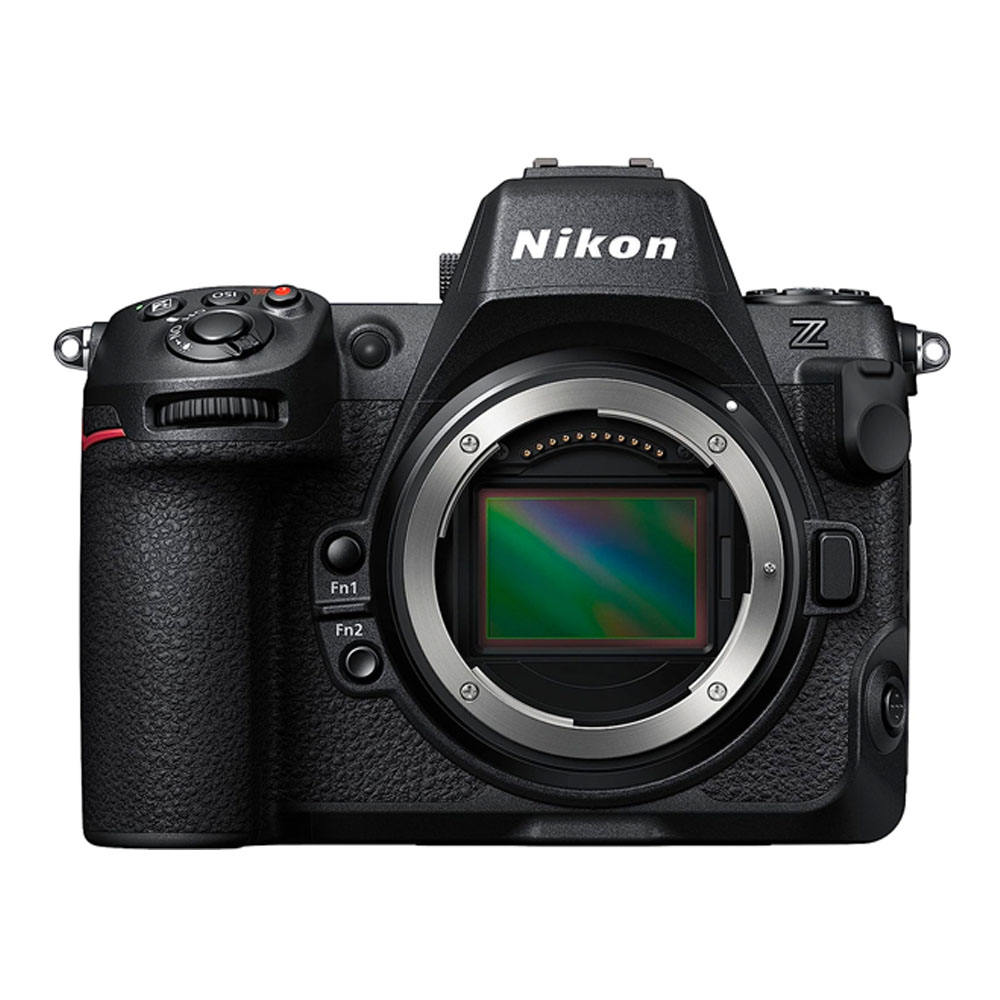
Nikon Z8
An absolute behemoth in every respect, the Nikon Z8 is poised to be the go-to camera for professionals and enthusiastic amateurs with the budget.
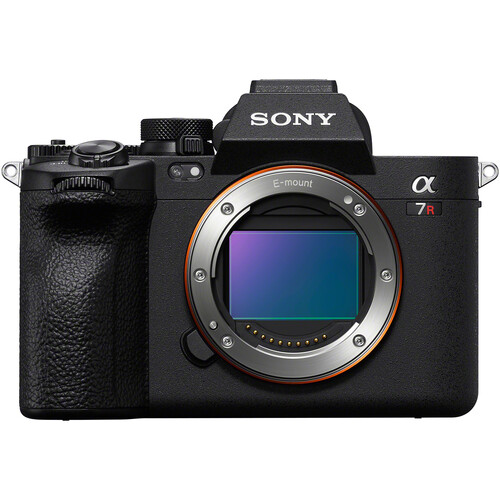
Sony A7R V
The Sony A7R V builds on the power of its predecessor with more stops of image stabilization and a new AI autofocus unit, but the massive 61MP sensor could be overkill for astrophotography.
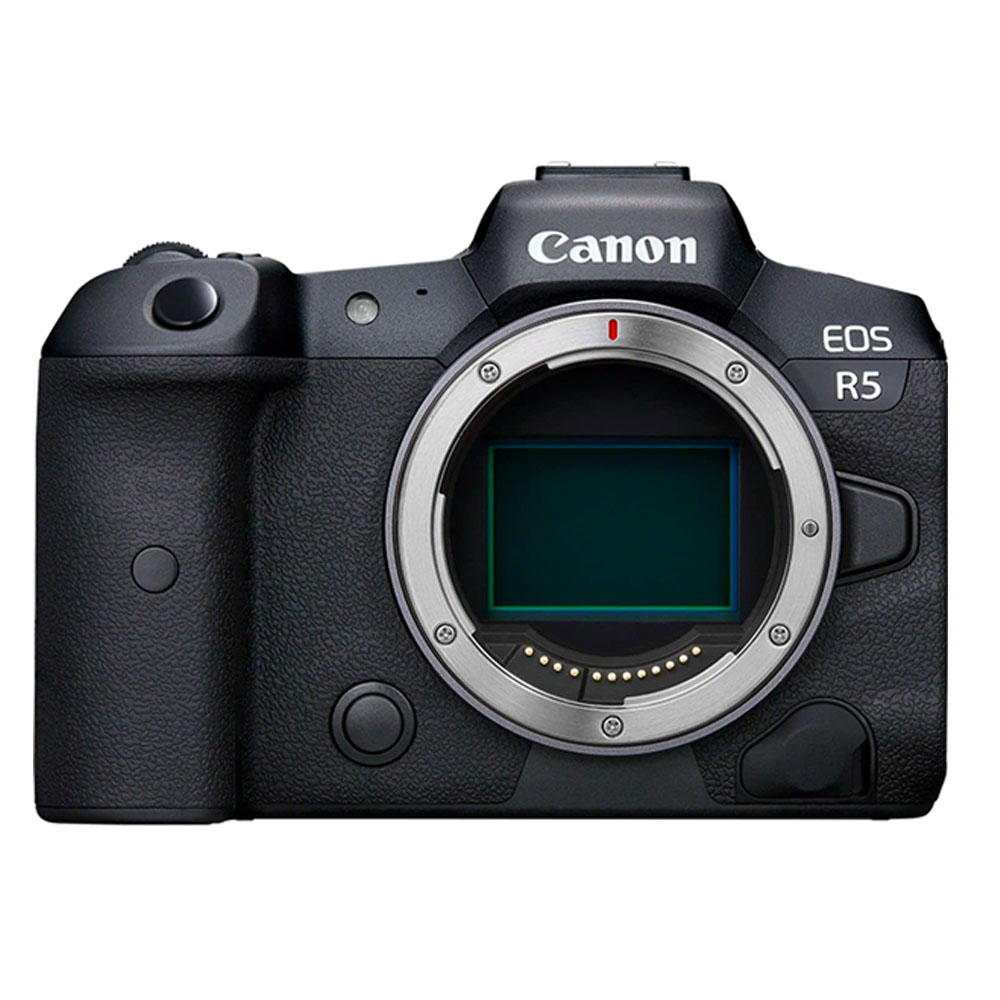
Canon EOS R5
One of the best cameras on the market at the moment, and possibly Canon's finest ever technical achievement. A superlative, but very expensive package.
Specifications
Here we've listed some of the key specs users look for when researching different cameras. While it's not a comprehensive list, we've narrowed it down to all the most important ones that astrophotographers tend to prioritize, as well as specs that relate to other photography disciplines, too.
| Header Cell - Column 0 | Nikon Z8 | Sony A7R V | Canon EOS R5 |
|---|---|---|---|
| Date first released | May 2023 | December 2022 | July 2020 |
| RRP on release | $3999 | $3899 | $3899 |
| Type | Full frame mirrorless | Full frame mirrorless | Full frame mirrorless |
| Sensor type | Stacked CMOS | BSI-CMOS | CMOS |
| Megapixels | 45.7 | 61 | 45 |
| Lens mount | Nikon Z | Sony E | Canon RF |
| ISO | 64-25,600 (expanded 32-102,400) | 100-32,000 (expanded 50 - 102,400) | 100-51,200 (expanded 50-102,400) |
| Image stabilization | 6-stops | 8-stops | Up to 8-stops (with compatible lenses) |
| Autofocus detection range | EV-7 to +17 (EV-9 to +19 with starlight view) | down to EV-4 | down to EV-6 |
| AF points | 493 | 693 | 1053 |
| Viewfinder | 3.2" tilting | 3.2" tilt & fully articulating | 3.2" fully articulating |
| Screen resolution | 2,088,960 dots | 2,100,000 dots | 2,100,000 dots |
| EVF resolution | 3,686,400 dots | 9,440,000 dots | 5,760,000 dots |
| Slowest shutter speed | 900 sec | 30 sec | 30 sec |
| Continuous drive speed (frames per second) | 20FPS RAW, 30FPS JPEG, 60FPS 19MP JPEG, 120FPS 11MP JPEG | 7FPS RAW, 10FPS JPEG/Lossless RAW | 20FPS electronic shutter / 12FPS mechanical shutter |
| Video resolution | 8K 60p / 4K 120p | 8K 25p / 4K 60p | 8K 30p / 4K 120p |
| Storage | Single SD UHS-II and single CFexpress/XQD card | Dual UHS-II SD/CFexpress Type A slots | Single CFexpress Type-B card slot and single UHS-II SD card slot |
| Weather sealed | Yes | Yes | Yes |
| Battery life (CIPA) | 340 shots | 530 shots | 320 shots |
| Weight (inc battery) | 2.01 lb / 910g | 1.59 lb / 723g | 1.63 lb / 738g |
| Dimensions | 5.67 x 4.69 x 3.27″ / 144 x 119 x 83 mm | 5.16 x 3.82 x 3.23″ / 131 x 97 x 82 mm | 5.43 x 3.84 x 3.46″ / 138 x 98 x 88 mm |
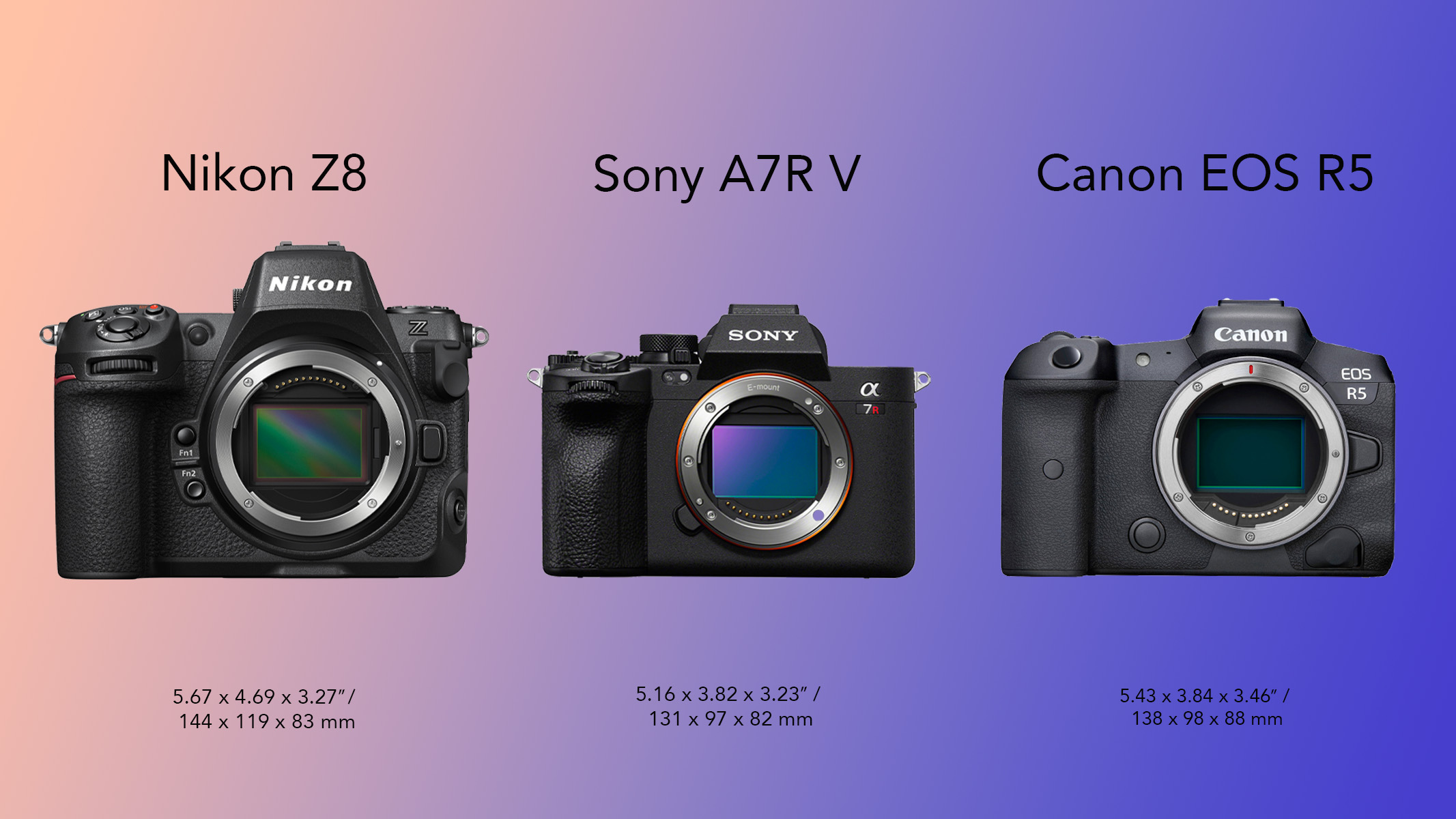
Similarities
These three cameras are often pitted against each other as they have a fair amount of similarities. For starters, they all sit at a very similar price point, particularly on their respective releases. While the Canon R5 is a few hundred dollars cheaper now, it's worth remembering that it's a slightly older model than the other two. In terms of resolution, the Nikon Z8 (45.7MP) and Canon R5 (45MP) are very similar, but Sony eclipses them both with a whopping 61MP stills resolution.
All three models have a similar ISO range, particularly when expanded, although the Nikon Z8 just edges it. They also all have a similar LCD screen resolution, although there are differences in functionality.
Get the Space.com Newsletter
Breaking space news, the latest updates on rocket launches, skywatching events and more!
All three cameras have similar video specs — all being capable of shooting 8K video, albeit slightly different frame rates, although it's worth noting that as the Canon R5 is slightly older, there have been issues of overheating.
In terms of weight, the Sony A7R V and Canon R5 are fairly similar, although, in practice, it won't be too noticeable as there are only a few grams between them — the Sony being 723g and the Canon being 738g.
Differences
Sensor resolution
No two (or in this case, three) cameras are the same, and these three options certainly have enough differences to make choosing between them harder than you might think. If we're talking megapixels, Sony comes out on top with 61MP compared to the Nikon's 45.7MP and the Canon's 45MP, however, the Nikon has a stacked CMOS sensor, which can often mean more than the number of megapixels it has.
In-body Image Stabilization
All three have image stabilization — the Nikon has 6 stops, the Sony has 8 stops and the Canon R5 has either 5 stops or 8 stops when paired with compatible lenses. But when it comes to continuous burst rates, the Nikon wins hands down, capable of a whopping 120FPS (although it does have limitations). In terms of weight and size, the Nikon is the heaviest, with the Sony and Canon being fairly similar to one another.
Autofocusing capability
In regards to autofocus, the Canon has the most autofocus points, although, with the AI-based autofocus in the Nikon and Sony, you could argue that the number of AF points doesn't mean as much. The Nikon Z8 can autofocus down to EV-7, or EV-9 in starlight mode, the Canon EOS R5 can do EV-6, with the Sony capable of EV-4. The Nikon Z8 is also capable of a whopping 900 seconds minimum shutter speed, whereas the Sony and Canon can only do 30 seconds.
Battery life
The Sony has a higher battery life, with 530 shots as opposed to the Nikon's 340 and the Canon's 320, and they all have different screens. We loved the Sony's fully articulating screen as it tilted outwards as well as to the side, although the Canon also has a regular articulating screen, and the Nikon screen is tilt only (although it can tilt in all directions). They also all have different EVF (electronic viewfinder) resolutions, with the Sony being the clear winner with 9.44M dots, the Canon having 5.76M dots and the Nikon having 3.486M dots.
But that's just looking at their specs on paper. We've thoroughly tested and reviewed each camera in their own right, so let's take a look at what we thought of each camera individually to get a better picture of why each one of these incredible cameras is worth considering.
Reasons to buy Nikon Z8
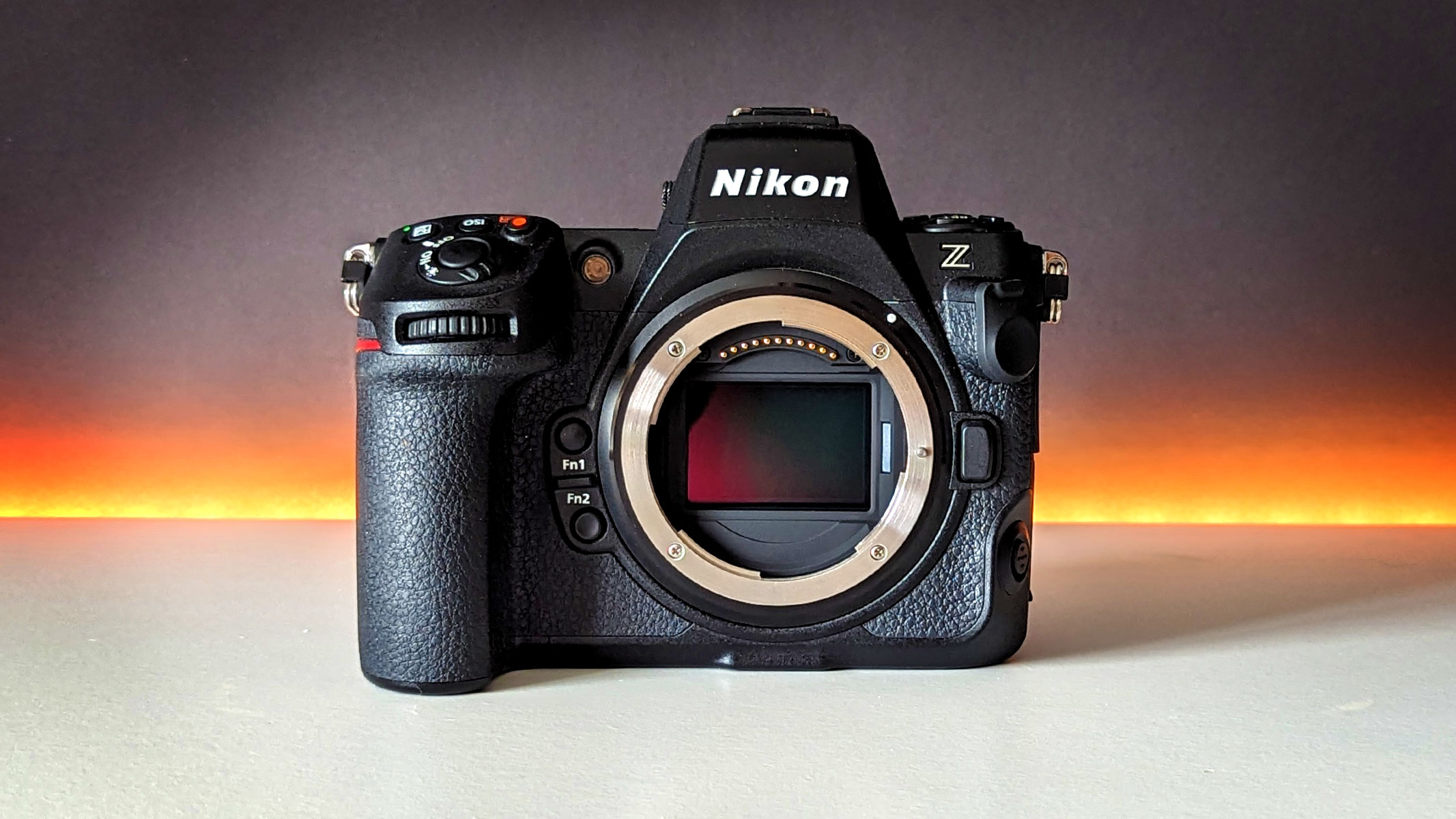
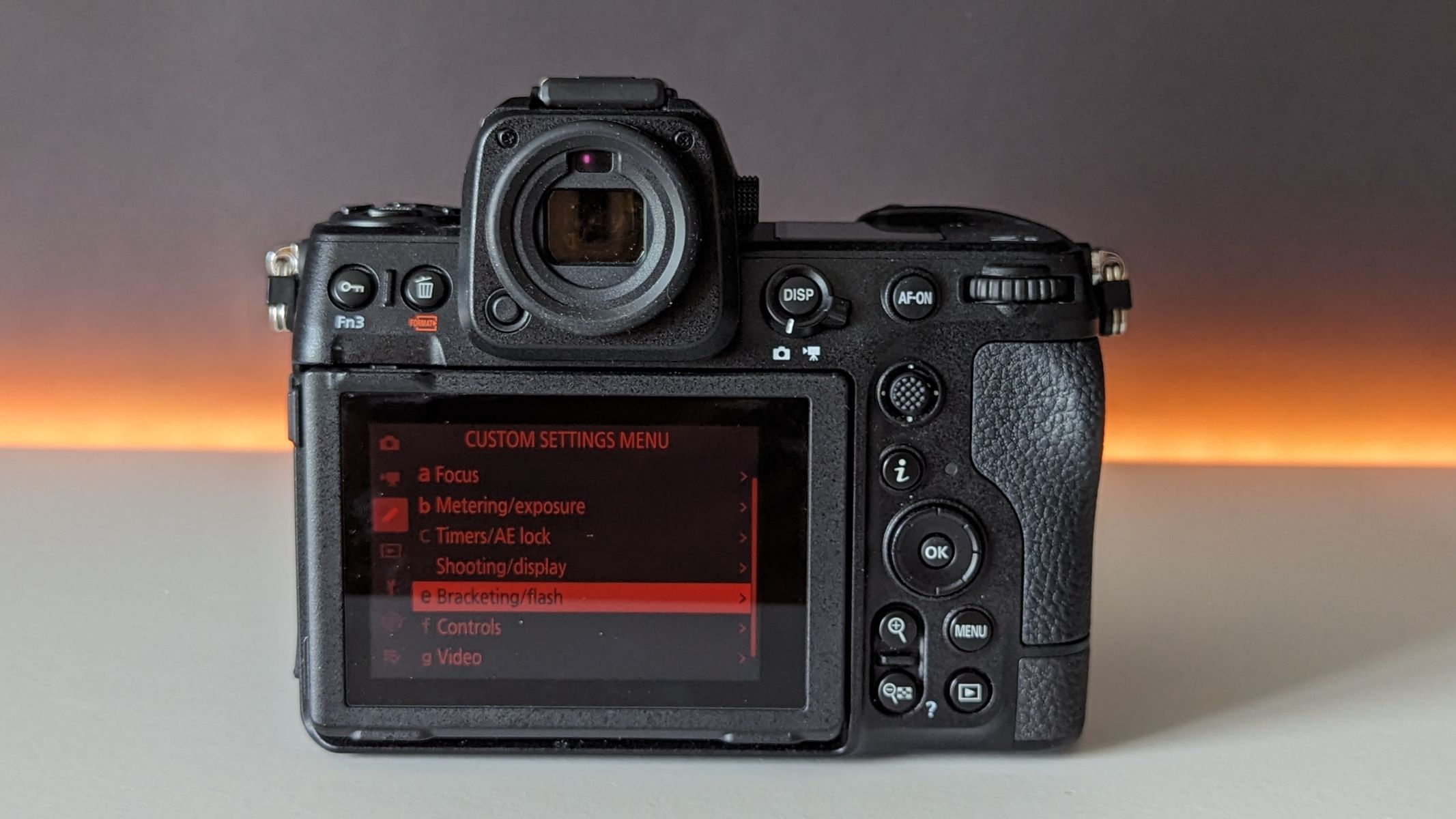
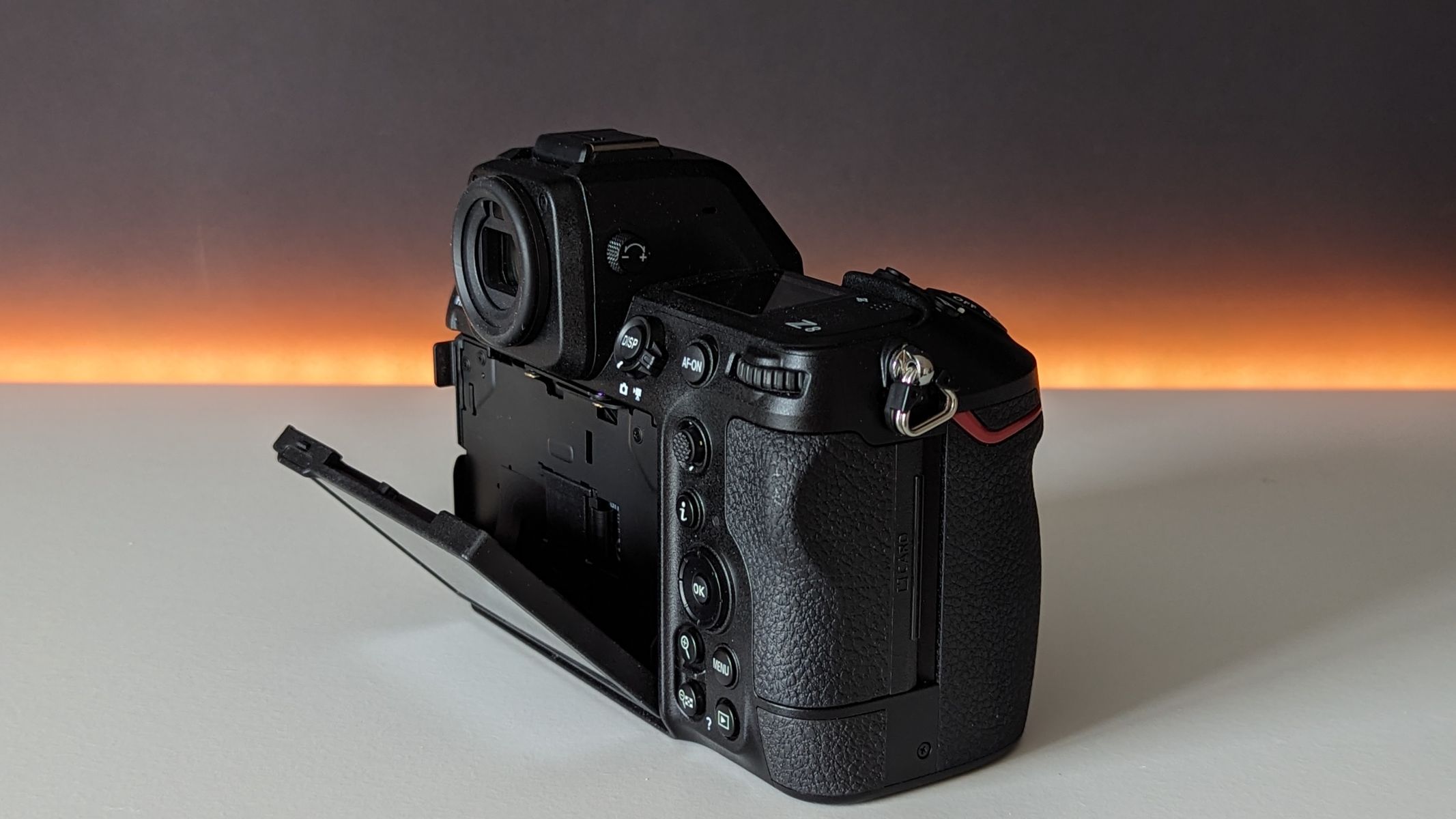
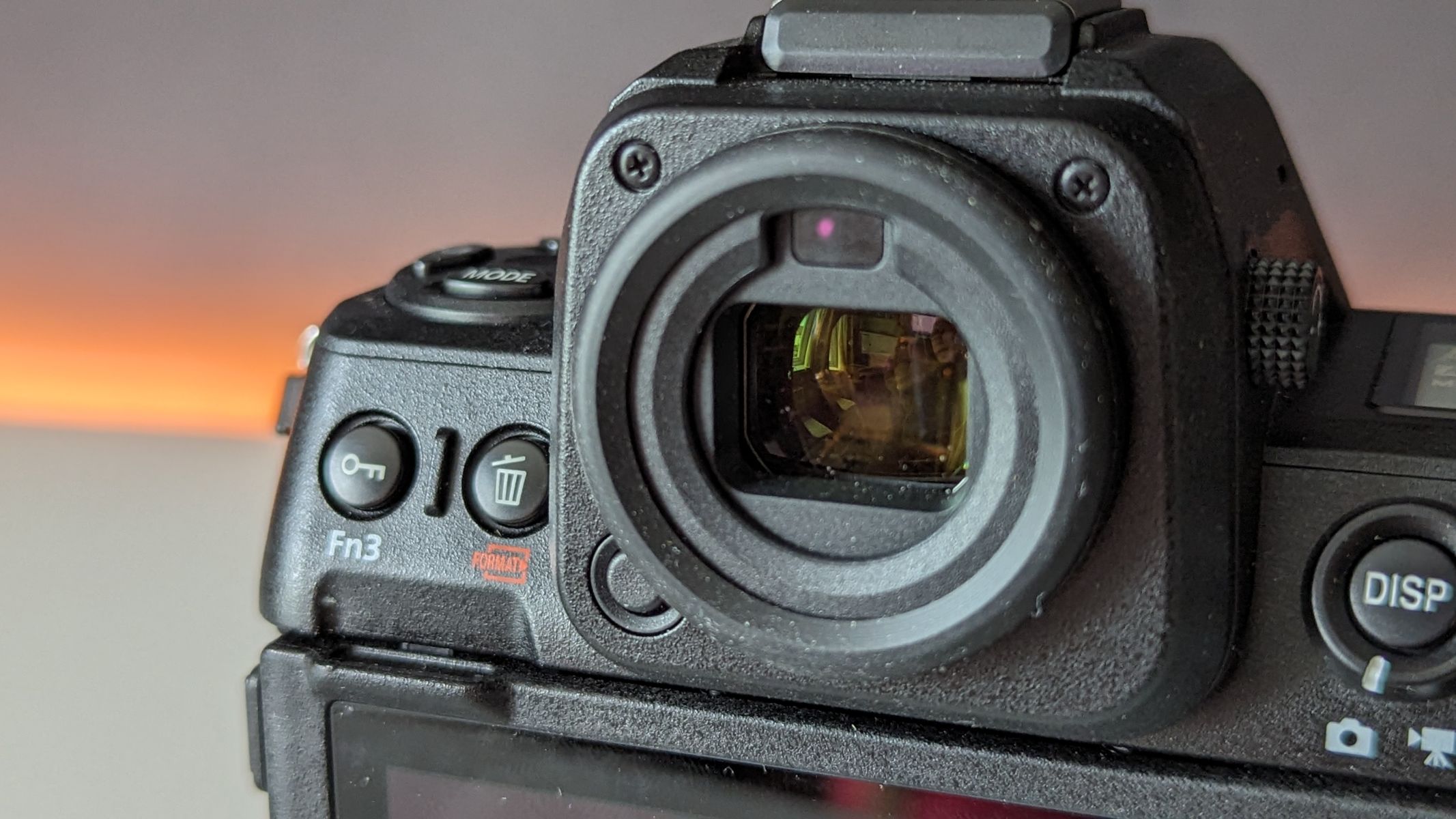
Probably the biggest advantage the Nikon Z8 has over the other two cameras is its stacked sensor, giving it improved image quality, faster readout speeds and higher resolution, among other things. This type of sensor certainly helps with the camera image noise handling, which we were incredibly impressed with when we reviewed the Nikon Z8. We were blown away by its low-light capabilities, and the reliable (not to mention, fast) autofocus can detect subjects easily in darker conditions, with its autofocus detection range dropping down to as low as EV-7, which is better (or at least equal) to quite literally every other camera we've tested. If that wasn't enough, when you enable Starlight mode, it drops down even further to EV-9, which is just unheard of, and the images we got with it when we tested it out were unreal. When it comes to low-light autofocus, the Sony A7R V and Canon EOS R5 just can't compete.
We also liked that it has night vision mode, which dims the rear screen and electronic viewfinder and uses only red pixels to help preserve night vision. The other two don't have this feature, although, you could just flip their fully articulating screens around so that the screen isn't on. It also has a maximum shutter speed of 900 seconds — that's 15 minutes! This makes the Nikon Z8 perfect for capturing star trails or pairing with one of the best star trackers or best telescopes for super detailed deep-sky images.

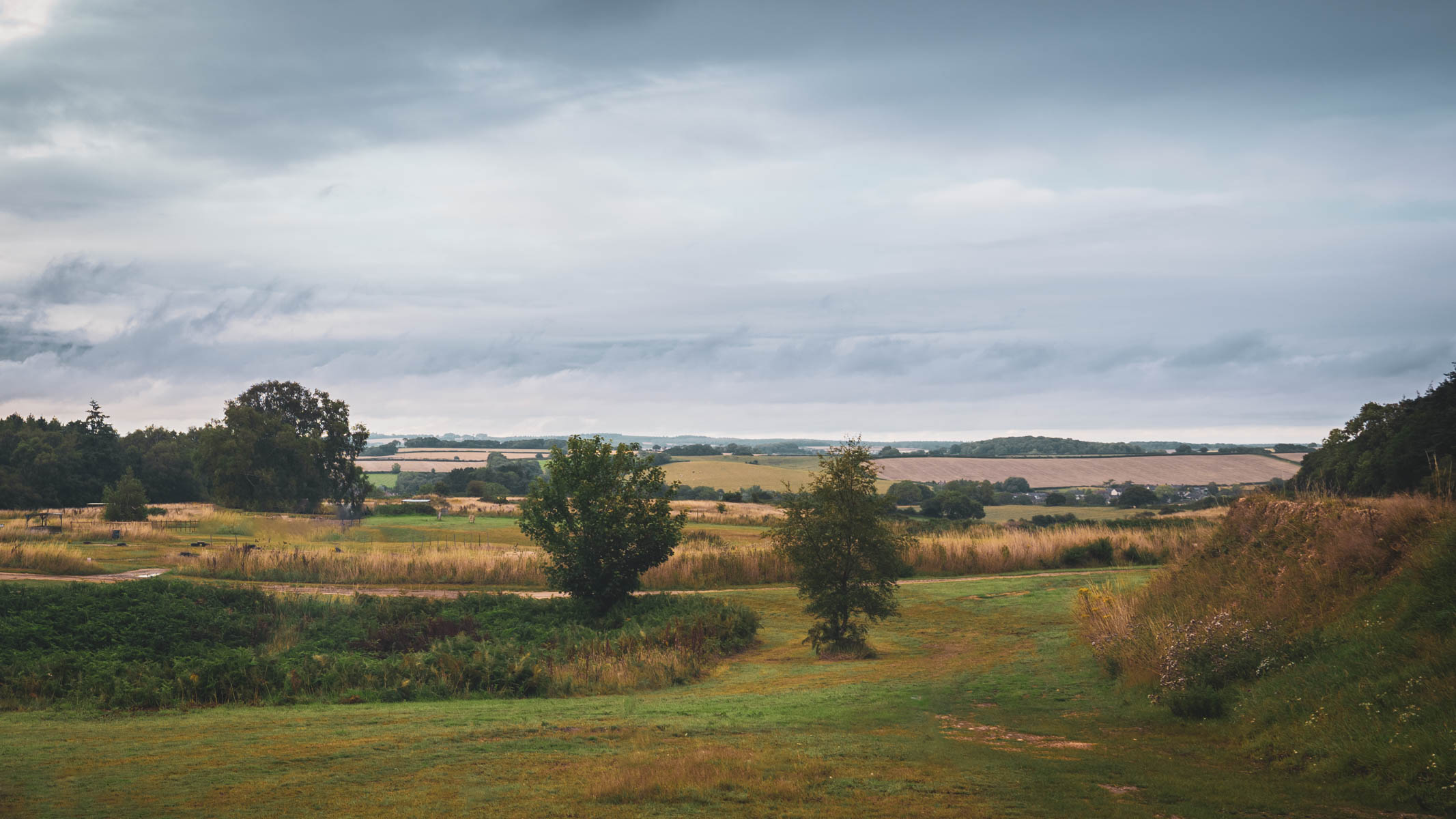
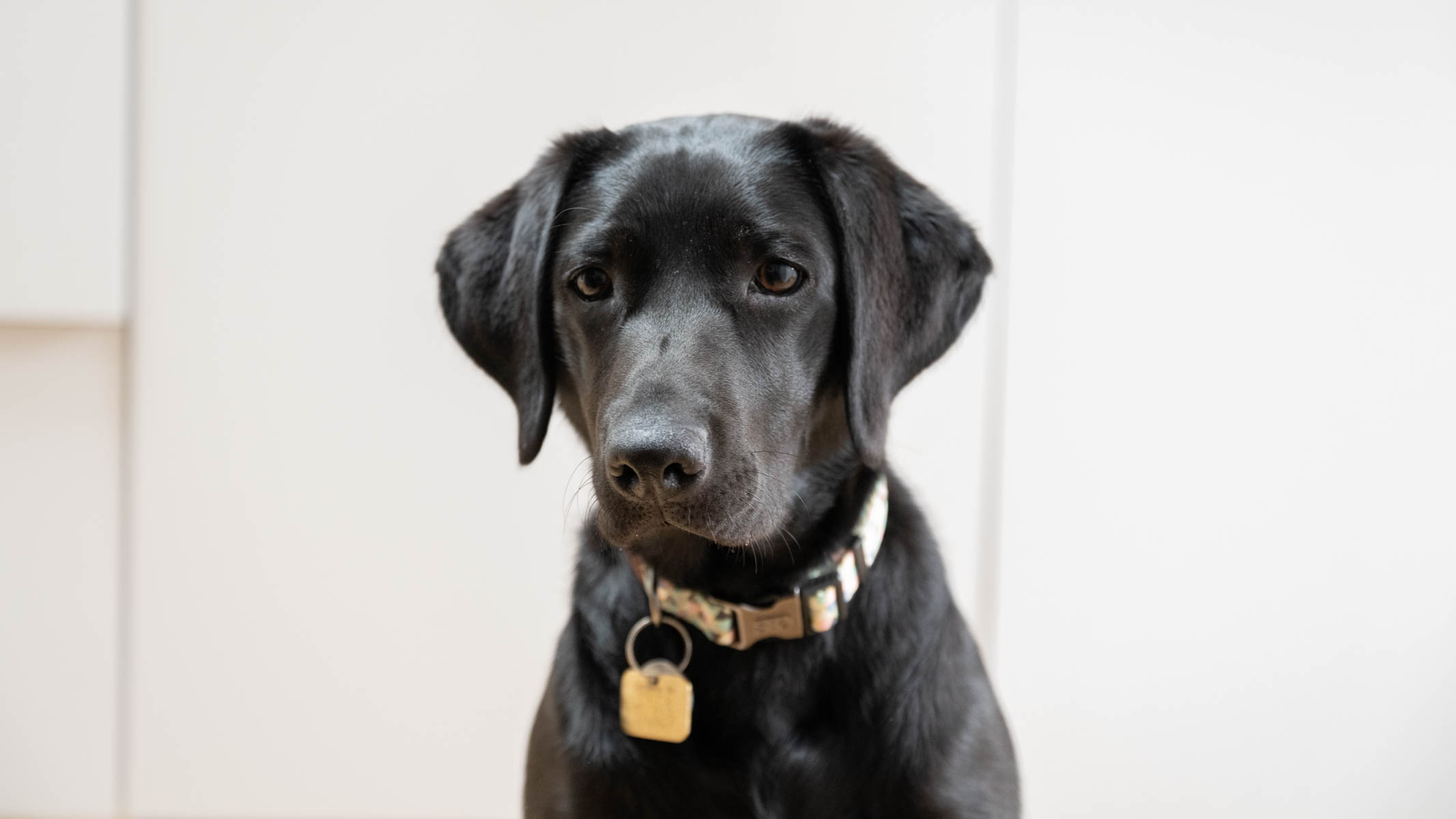
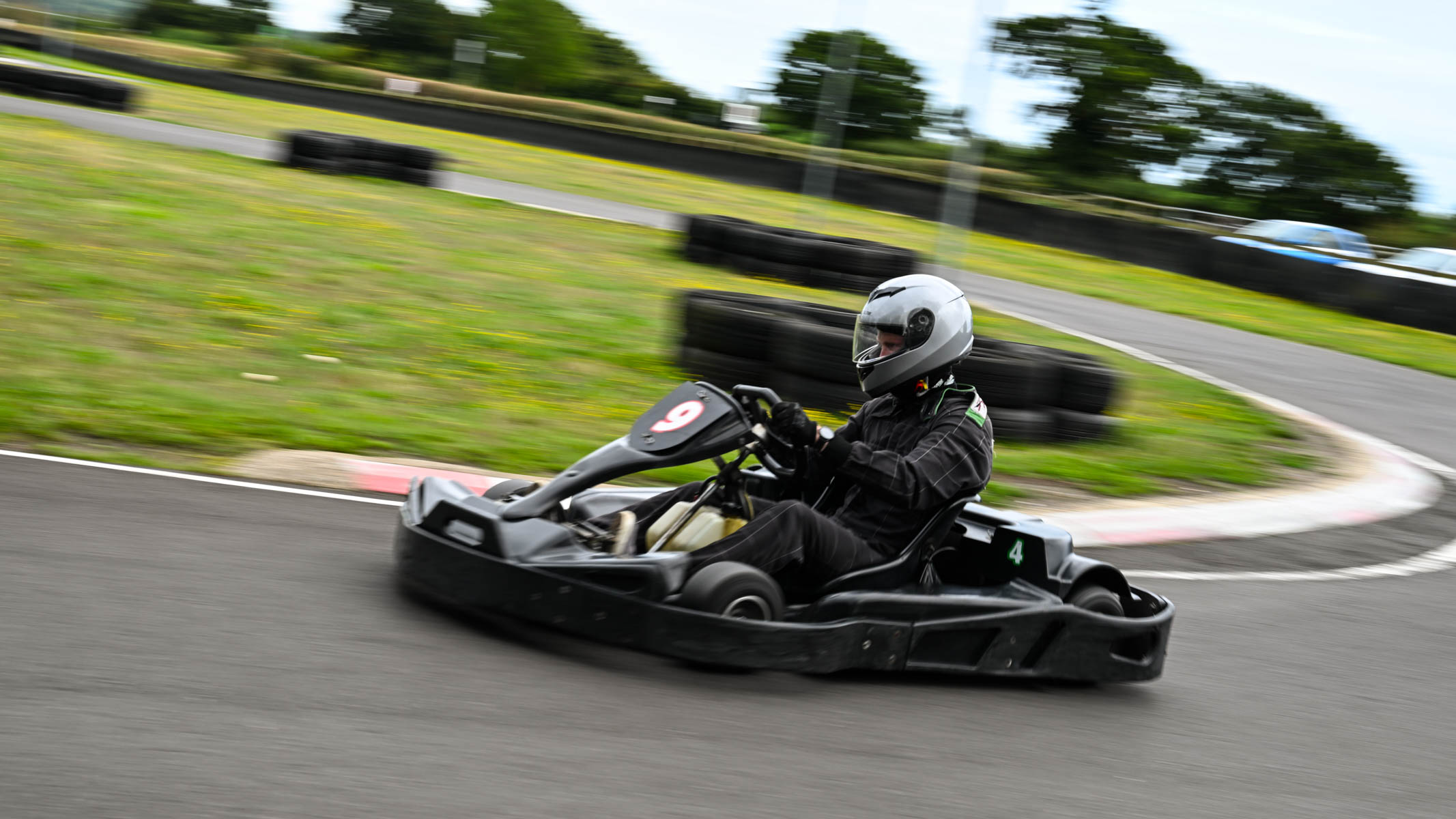
Continuing with the 'this is unheard of' theme, the Nikon Z8 has a frankly insane maximum burst speed of 120FPS...with autofocus and tracking. But there's a 'but' — these files are only 11MP, not the full 45.7MP the camera is capable of. Not to worry, though, it can drop down to 60FPS with a blackout during exposures, or down to 30FPS without any blackout. All of these speeds can only be shot in JPEG, and if you want RAW images, you'll have to settle with 20FPS (which is actually still really good!).
Another feature we love that makes this camera stand out, particularly for astrophotography, is the button layout. We liked the button layout overall, but the ISO and exposure adjustment buttons sit right next to the shutter button, which we thought made the world of difference in having them within easy reach when shooting in the dark. In regards to image quality, we were mightily impressed with the insane amount of detail and edge-to-edge clarity in both stills and video.
When we first had it in our hands we immediately knew it was a professional camera that meant business. It's not for the faint of heart, though, as it is bigger and heavier than the Sony A7R V and Canon EOS R5. That said, many users may prefer a camera that feels chunkier in the hand. Overall we were very impressed with the build quality, it felt sturdy and strong while still being lighter than other flagship models.
- Read our full Nikon Z8 review
Reasons to buy Sony A7R V
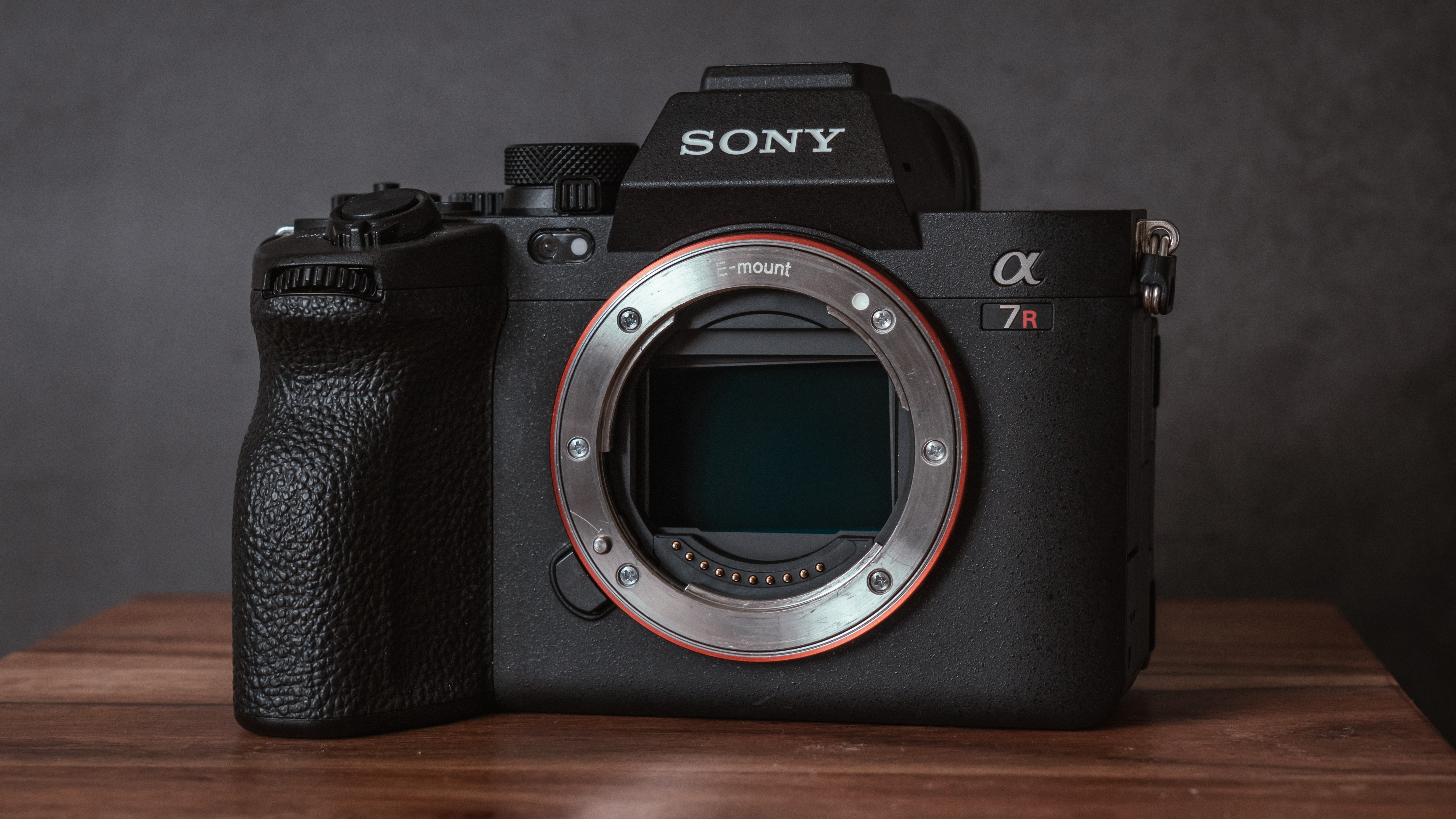
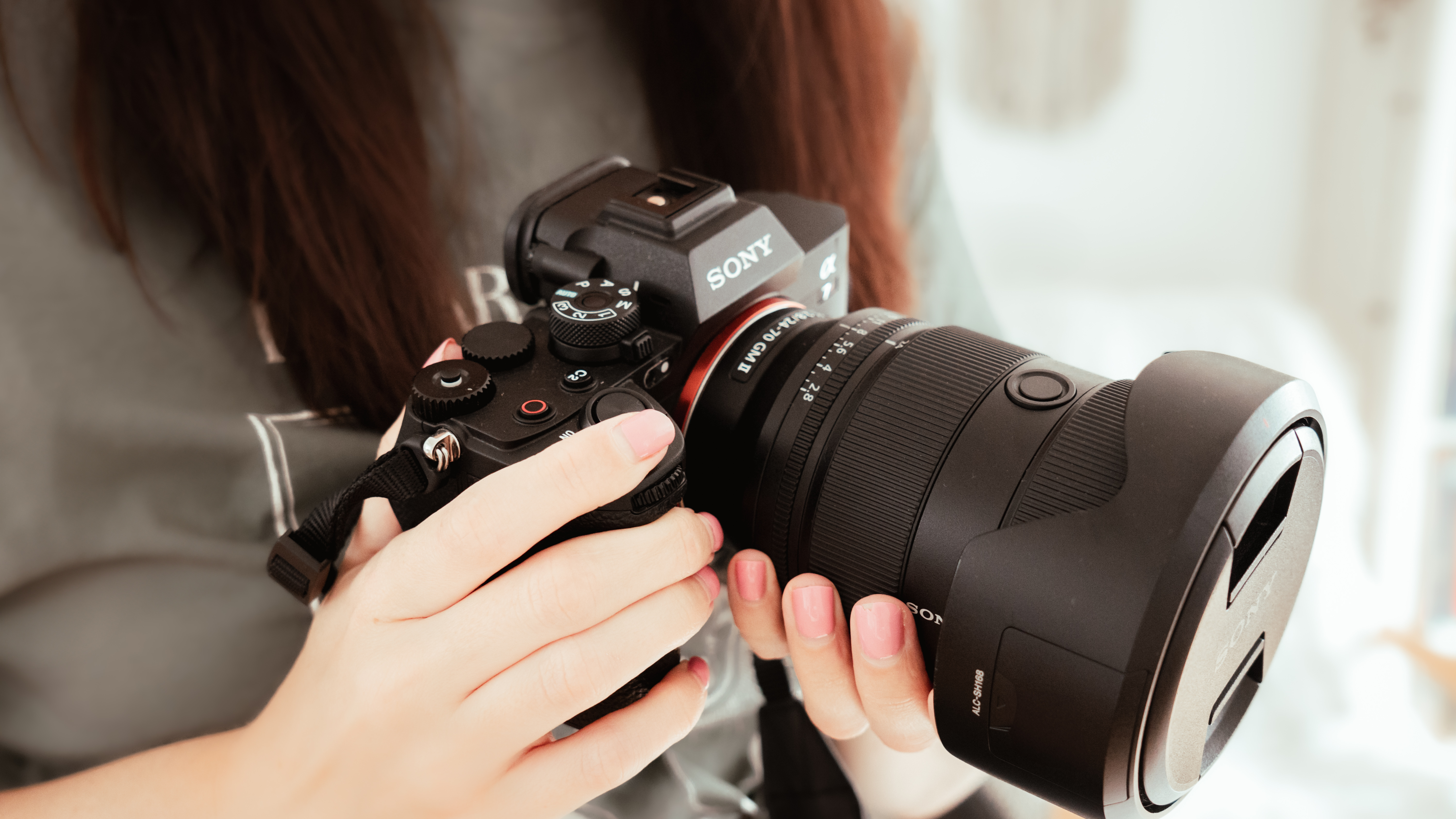
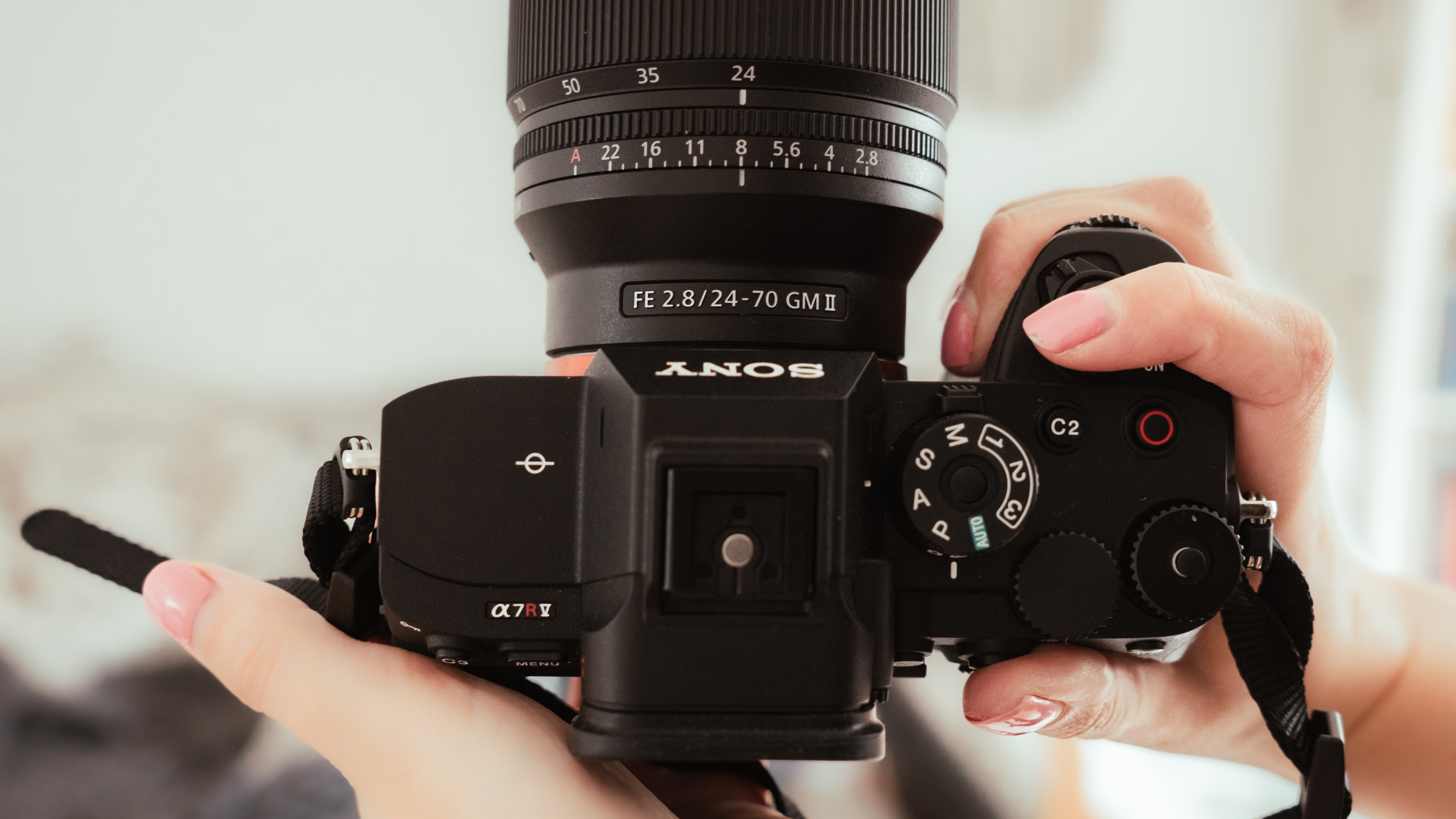
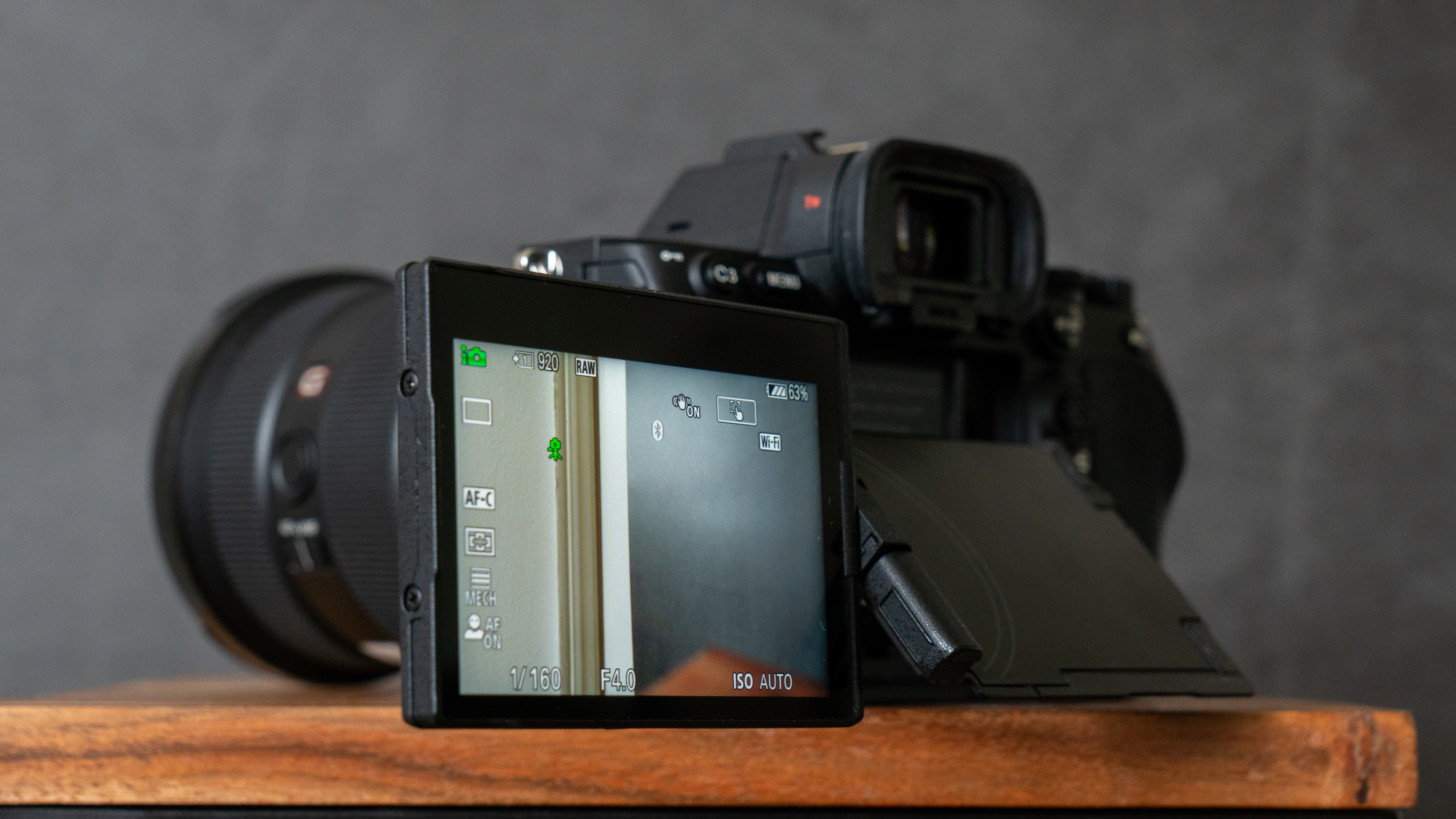
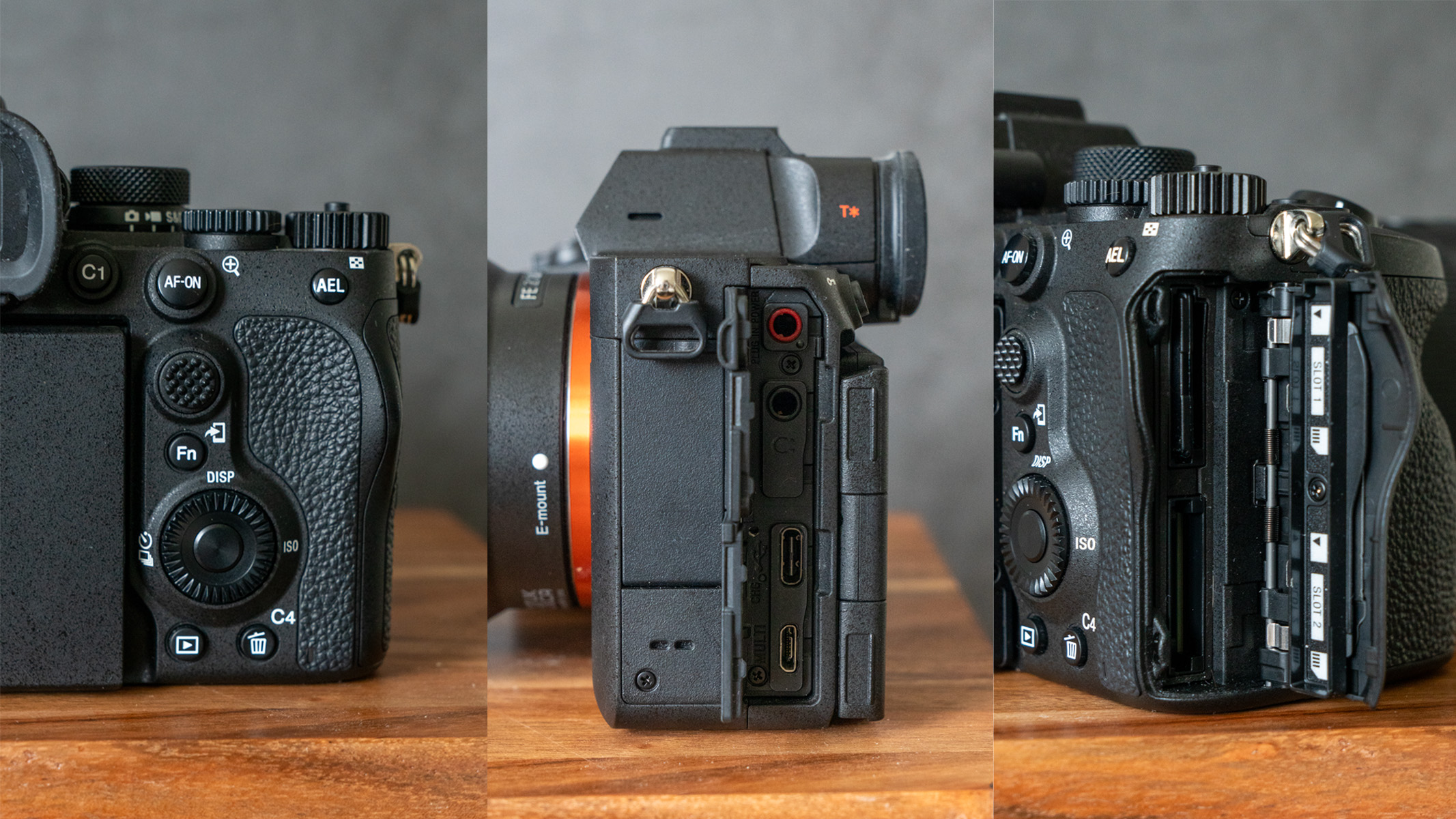
So why should you choose the Sony A7R V over the Nikon Z8 and the Canon EOS R5? Simply put, the Sony has a new AI-powered autofocus system that is on another level from anything else we've reviewed. The Nikon Z8 does have AI-assisted autofocus capabilities, but the new unit in the Sony is unlike anything else we've seen. It uses deep learning and Real-Time Recognition to predict how your subject is going to move and can recognize a human's eyes, head and major body parts, and it will also detect noses, necks, shoulders, elbows, wrists, hips, knees and ankles. When we reviewed the Sony A7R V, we tested the autofocus out on a pair of black cats (who are notoriously difficult to photograph), and it followed their eyes through the frame flawlessly and switched to face and head tracking when they weren't facing the camera. But it's not just humans and animals it can detect, it also has subject recognition for cars, trains, planes, animals and insects.
When it comes to image resolution, the Sony A7R V wins hands down. It builds on the sensor of its predecessor, giving a whopping 61MP of resolution, which is currently the highest of any mirrorless camera on the market. We were really impressed with the image quality, so if it's pure detail and resolution you're going for, the Sony A7R V is the one to get.
We also raved about the functionality and versatility of the LCD screen on the A7R V when we reviewed it. Not only does it tilt outwards like a regular tilt-only screen, but the screen can then flip out and fully articulates so you can shoot in quite literally any angle or position you can think of. This makes this camera an incredibly appealing option for vloggers and content creators, too. The LCD screen is a similar resolution to the other two cameras, but when it comes to the EVF, the Sony wins hands down. The EVF on the Sony is a huge 9.44 million dots (same as the Sony A1) which is almost double that of the Canon and around 3x that of the Nikon. It was clear and bright, and we much preferred using the EVF compared to the LCD screen.
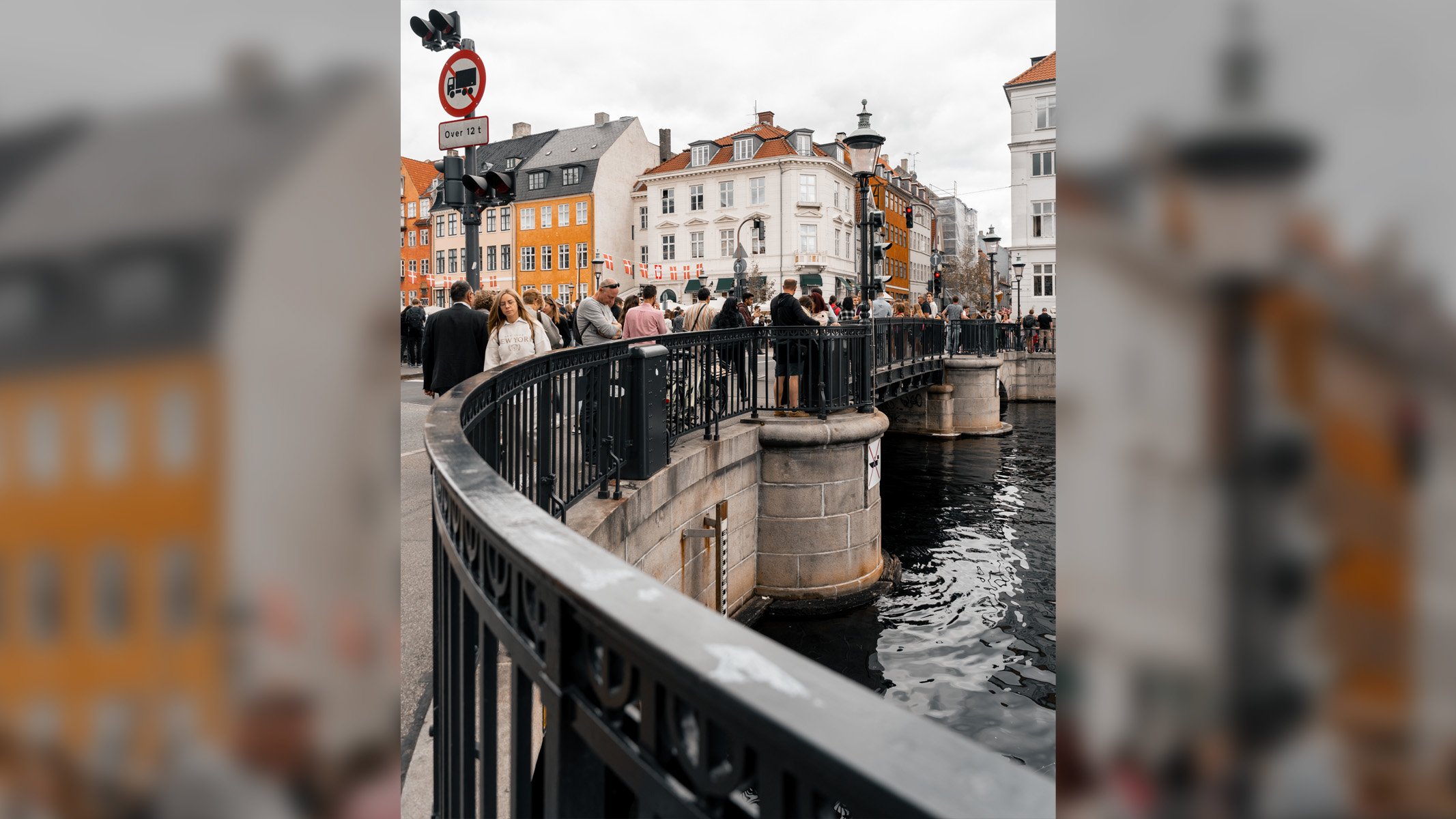
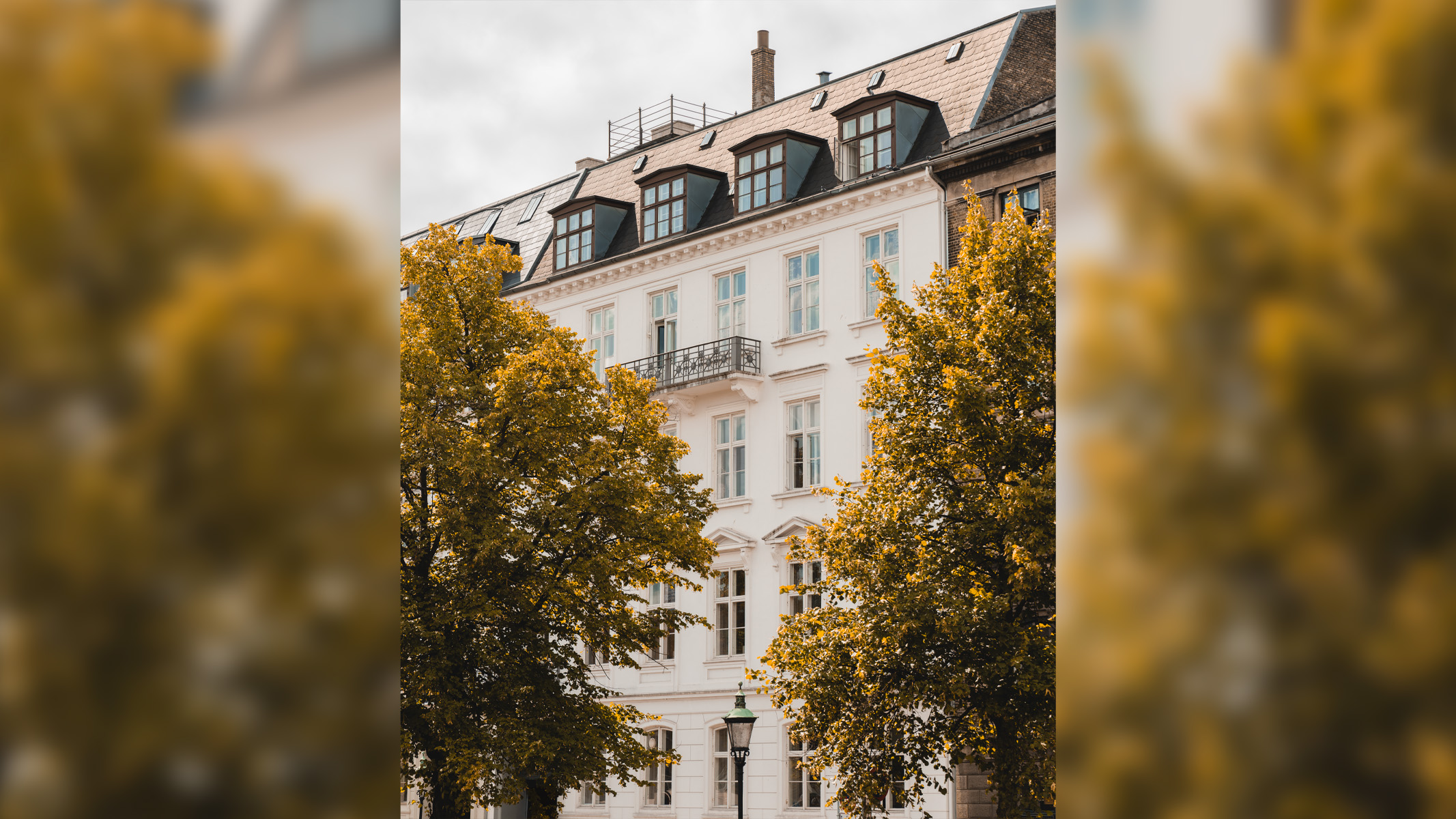
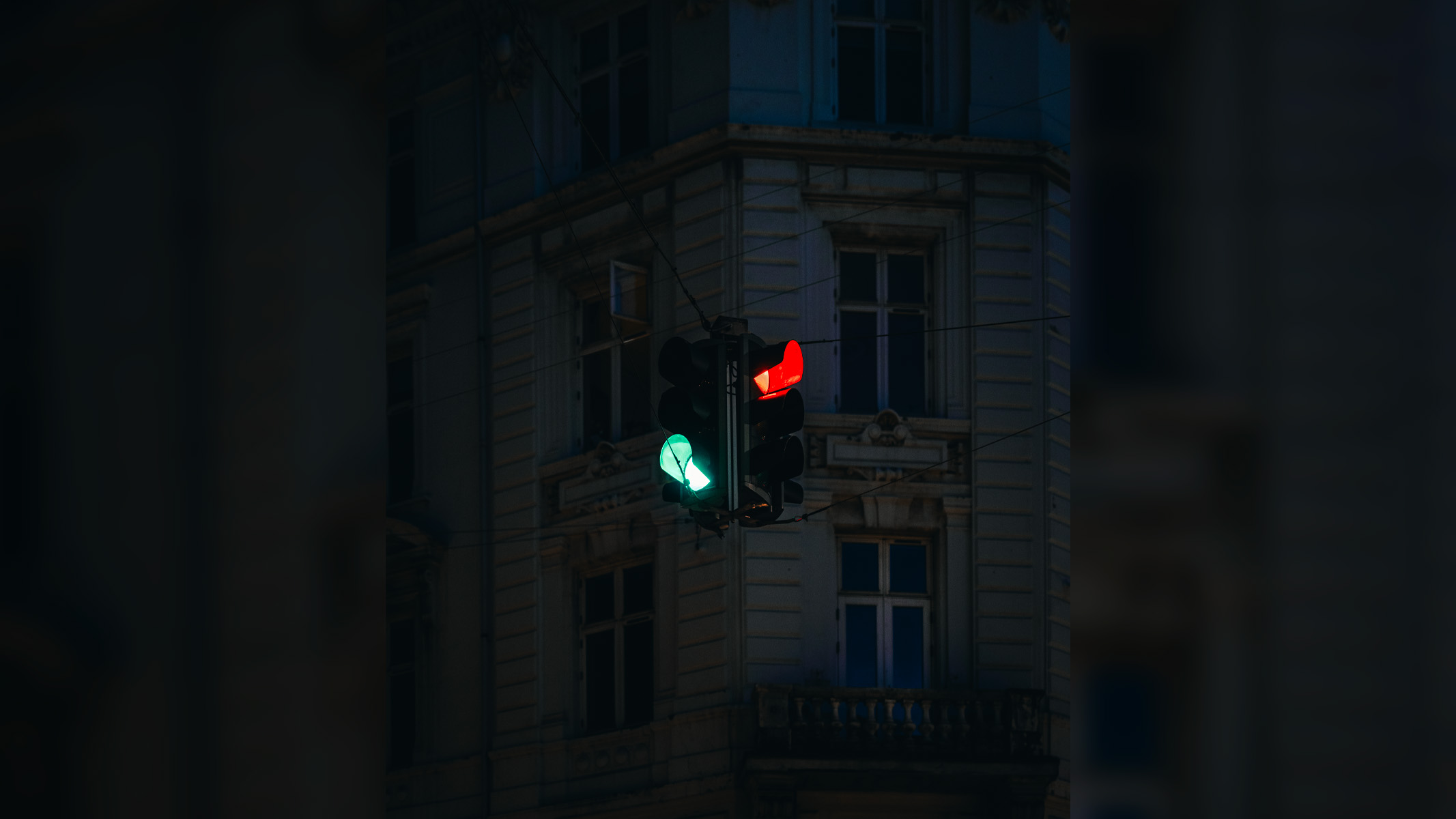
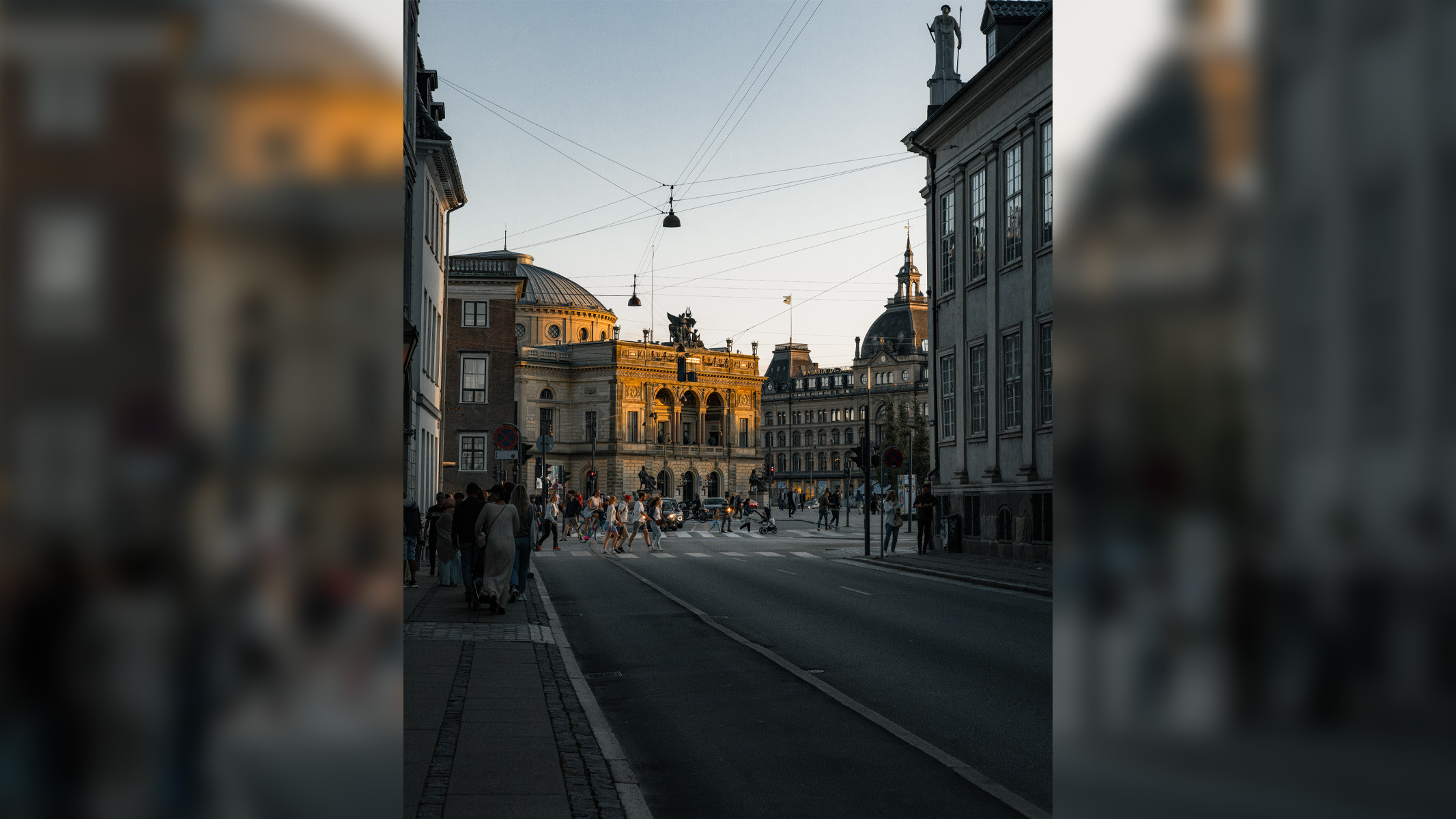
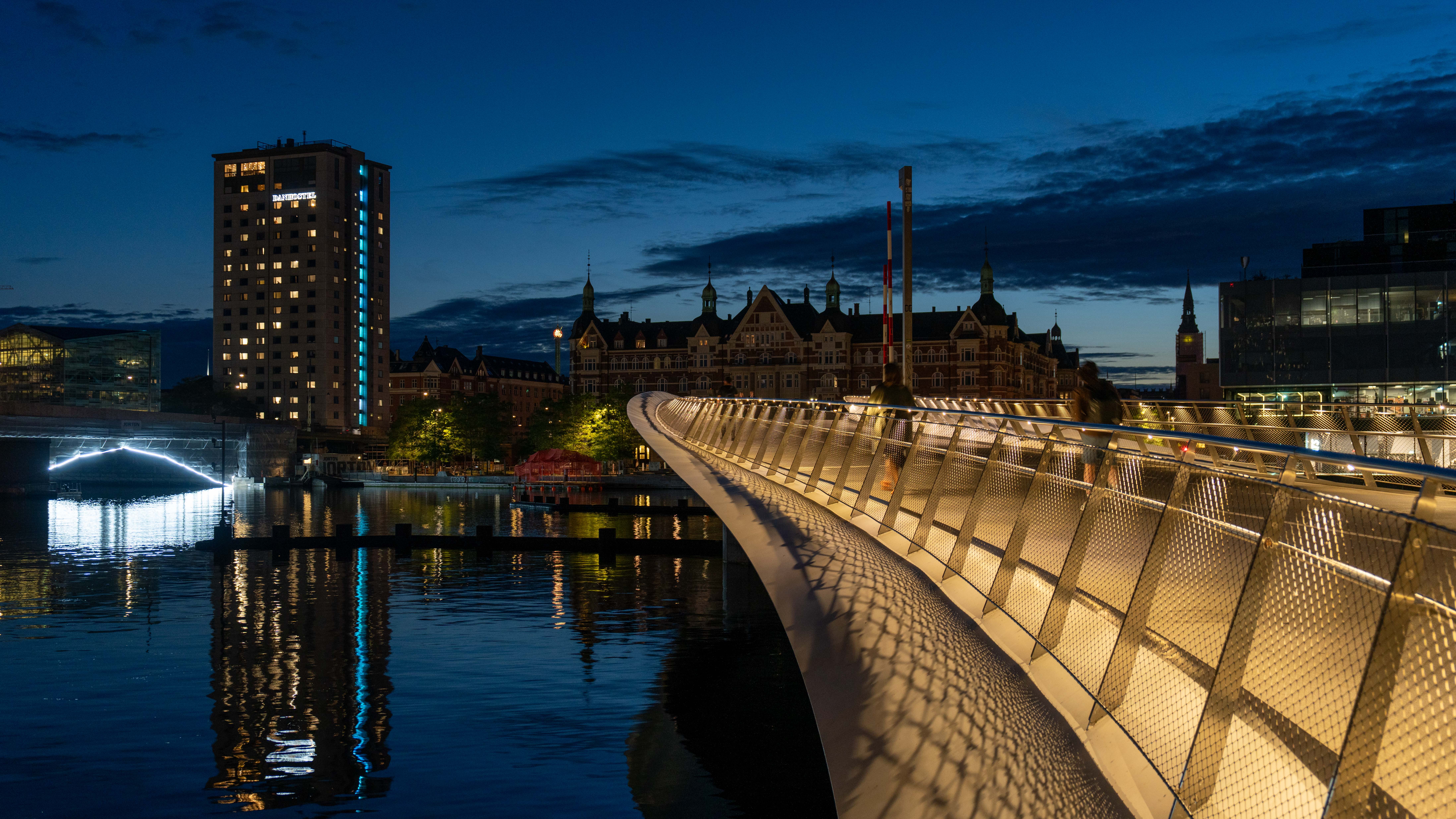
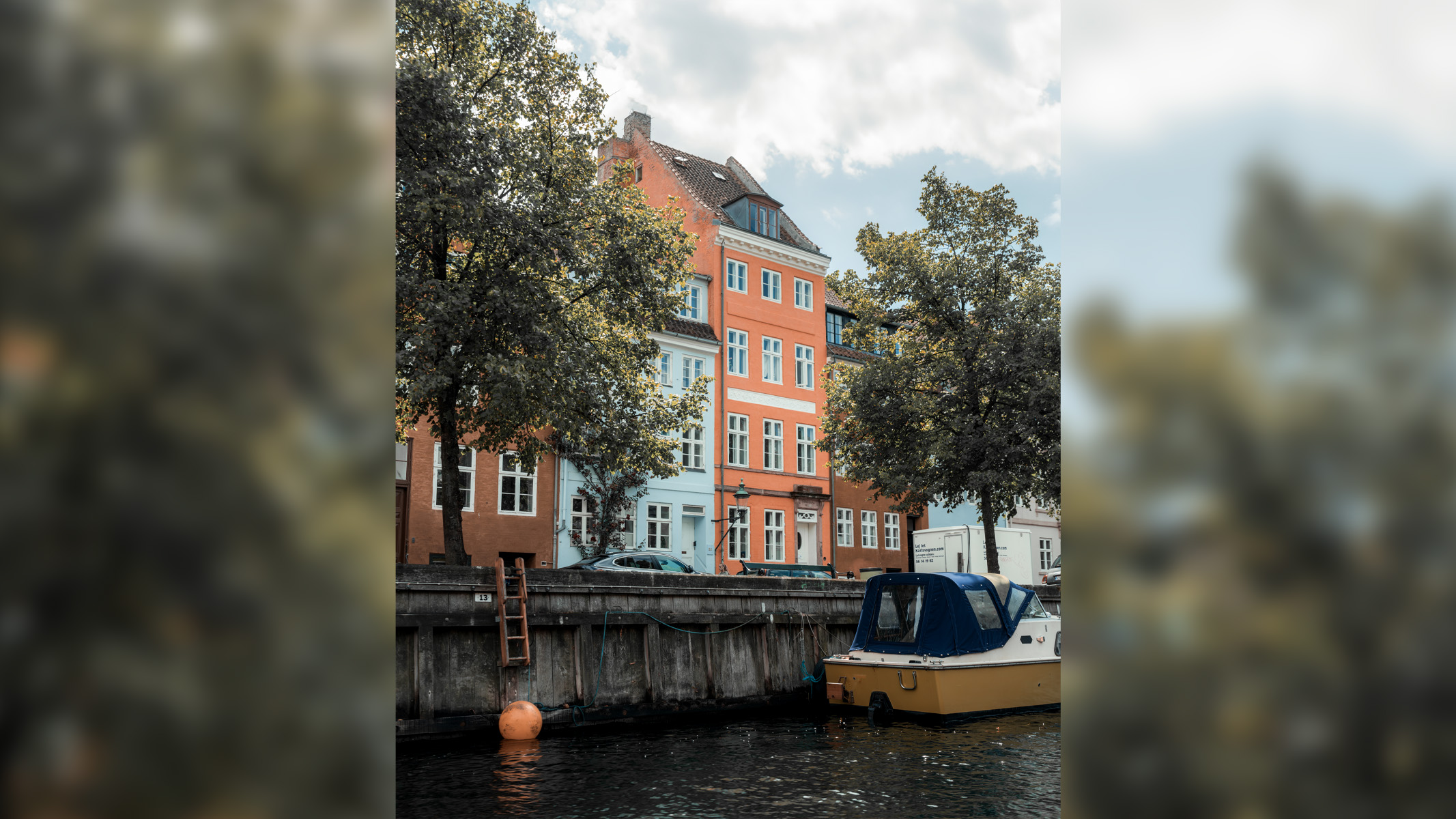
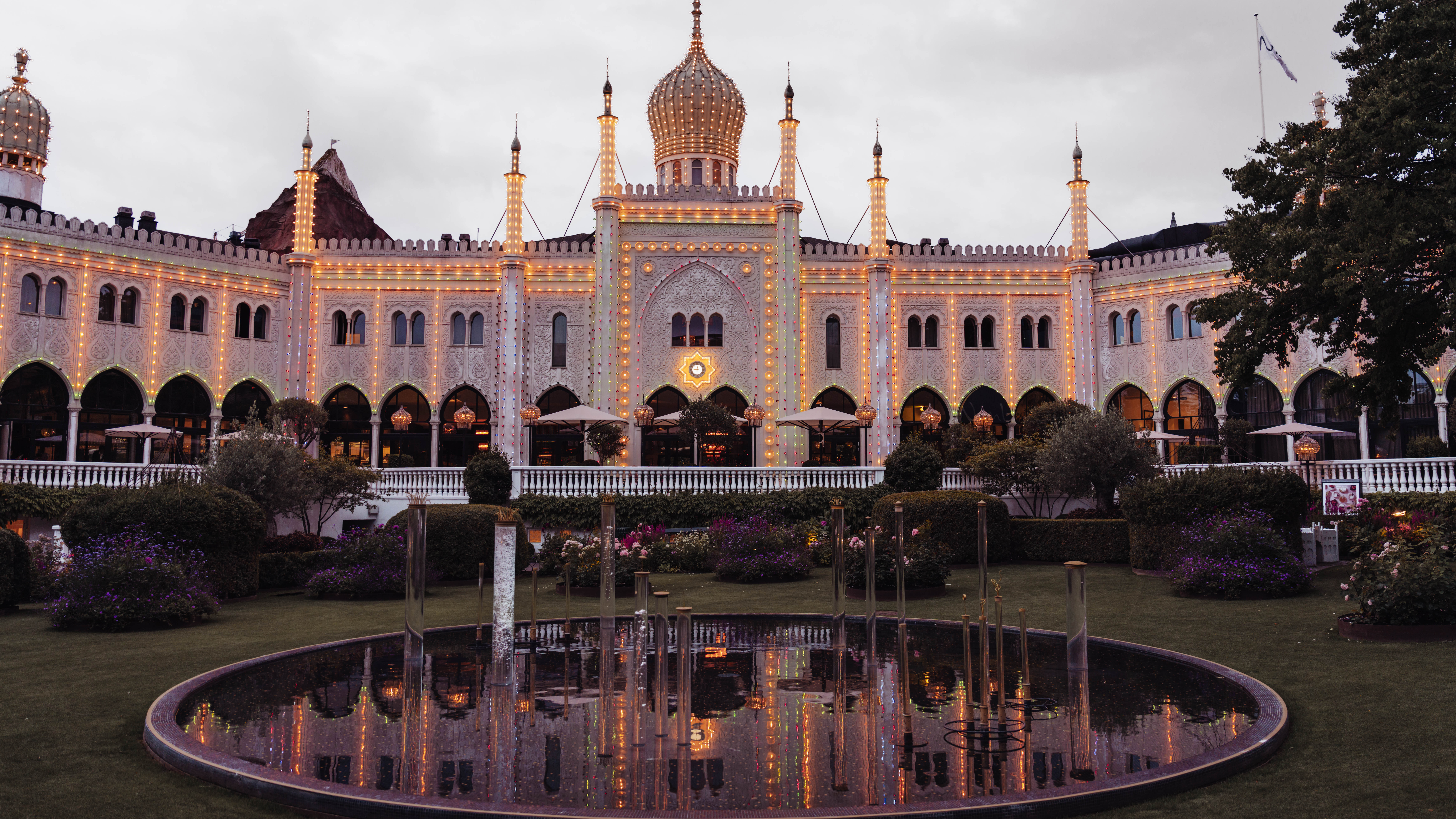
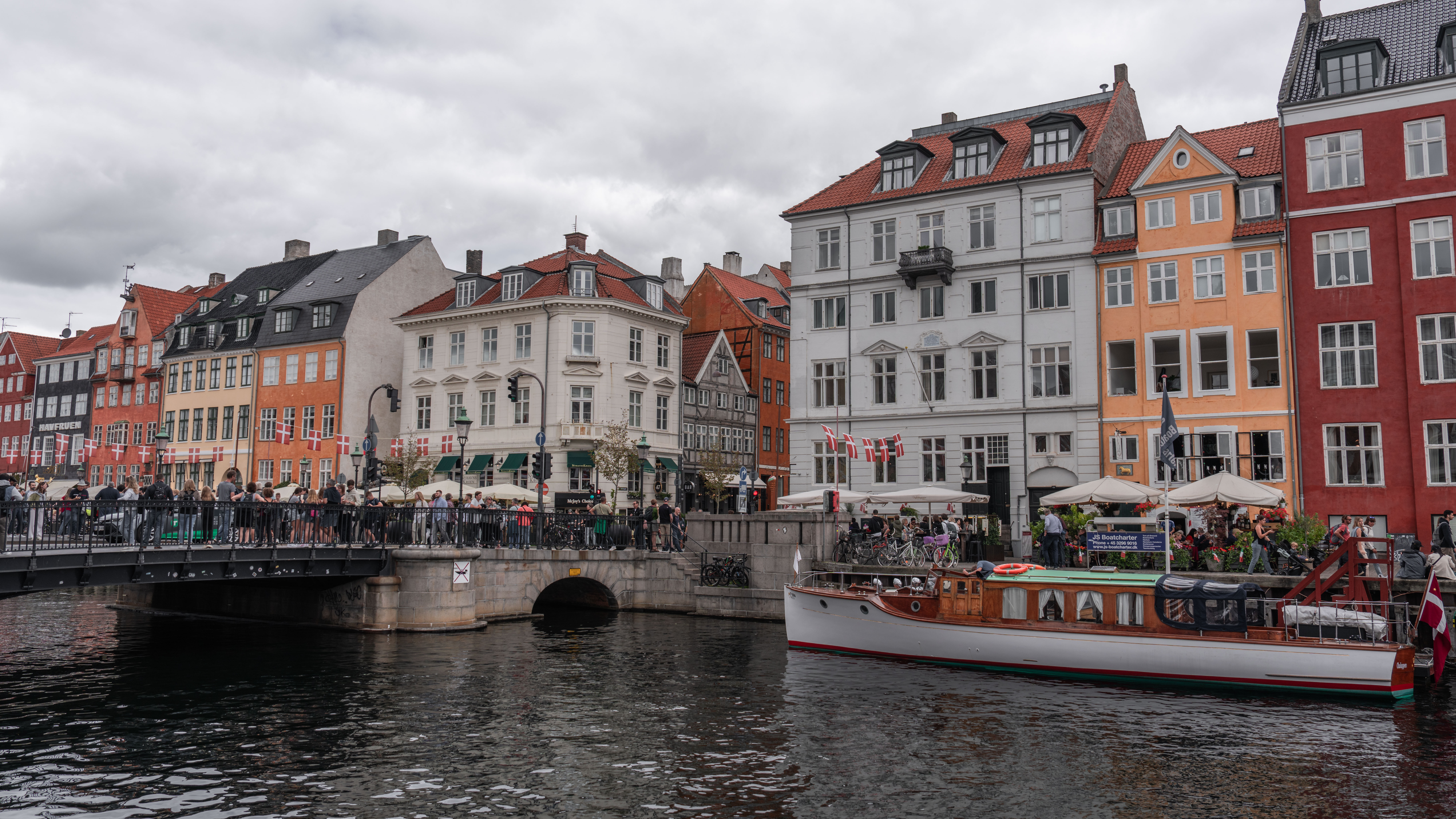
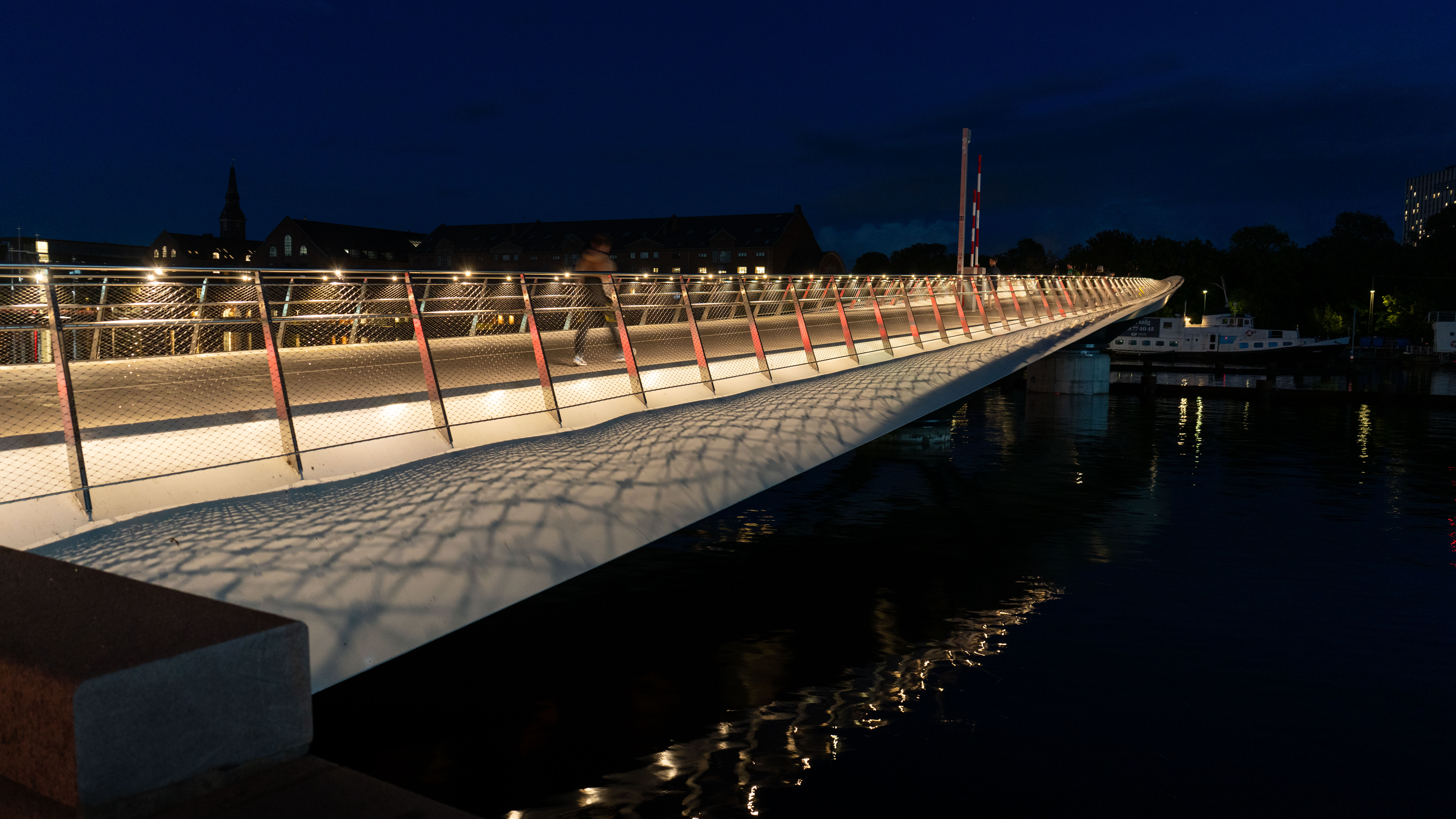
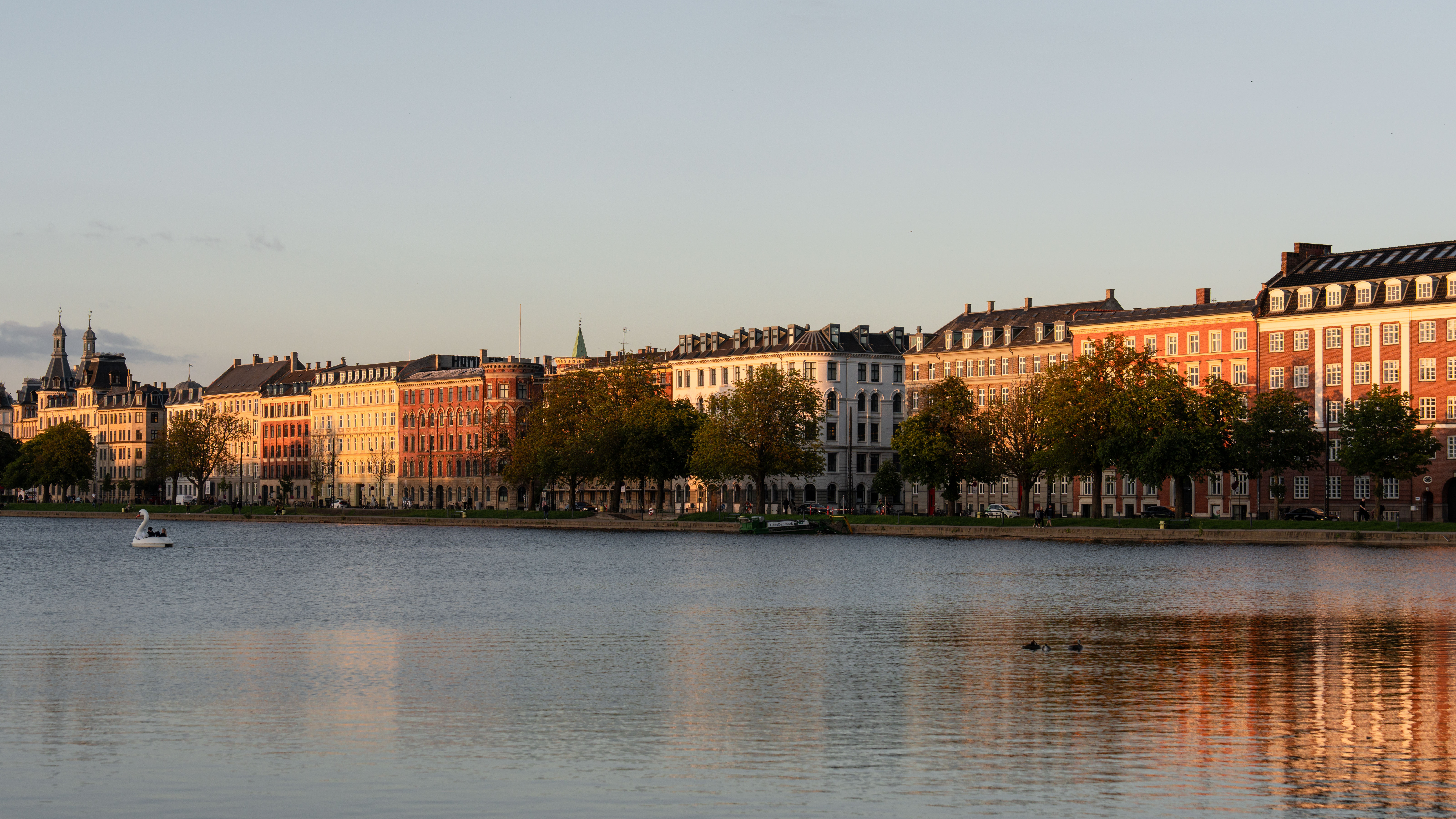
We were also really impressed by the battery life on the Sony A7R V, which is no surprise given that it's the highest of all three models we're comparing here. Sony claims you can get 530 shots per charge, and we tested it out over the course of five days in the Lake District in England and another 5 days in Copenhagen, and even though we weren't shooting all day every day, we hardly had to charge it at all.
If size and weight are important factors in your purchasing decision, then the Sony A7R V will be the most tempting option as it's the smallest and lightest of all three. We thought it was incredibly comfortable to hold for longer periods and the grip is just the right size to appeal to people with larger or smaller hands. Not to mention, its small form factor makes it convenient to take traveling. Having reviewed a multitude of Sony's full-frame lenses, they are also surprisingly small and lightweight compared to the lenses from other manufacturers, which is something you also need to consider if you plan on using your camera for travel.
- Read our full Sony A7R V review
Reasons to buy Canon EOS R5
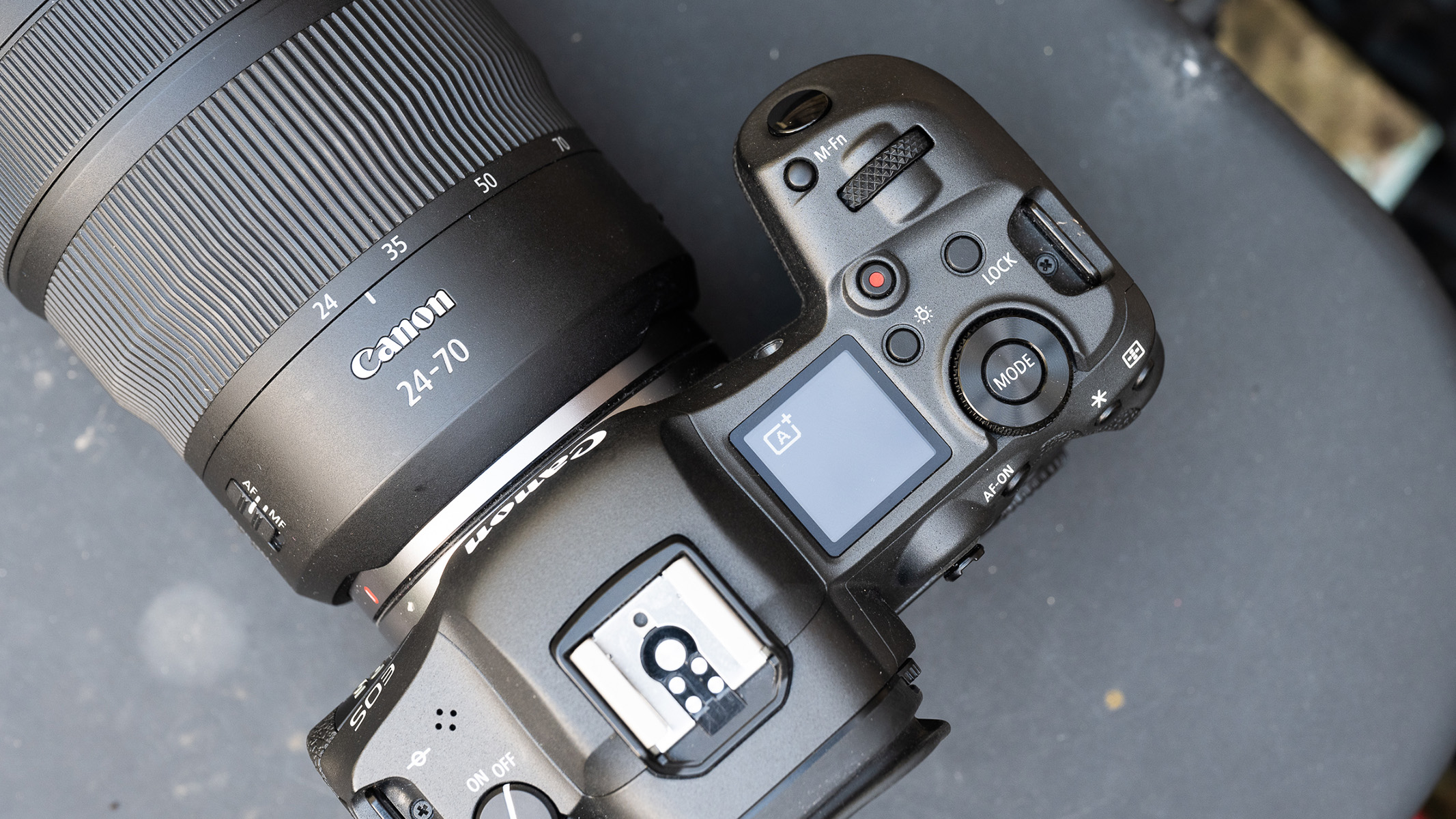
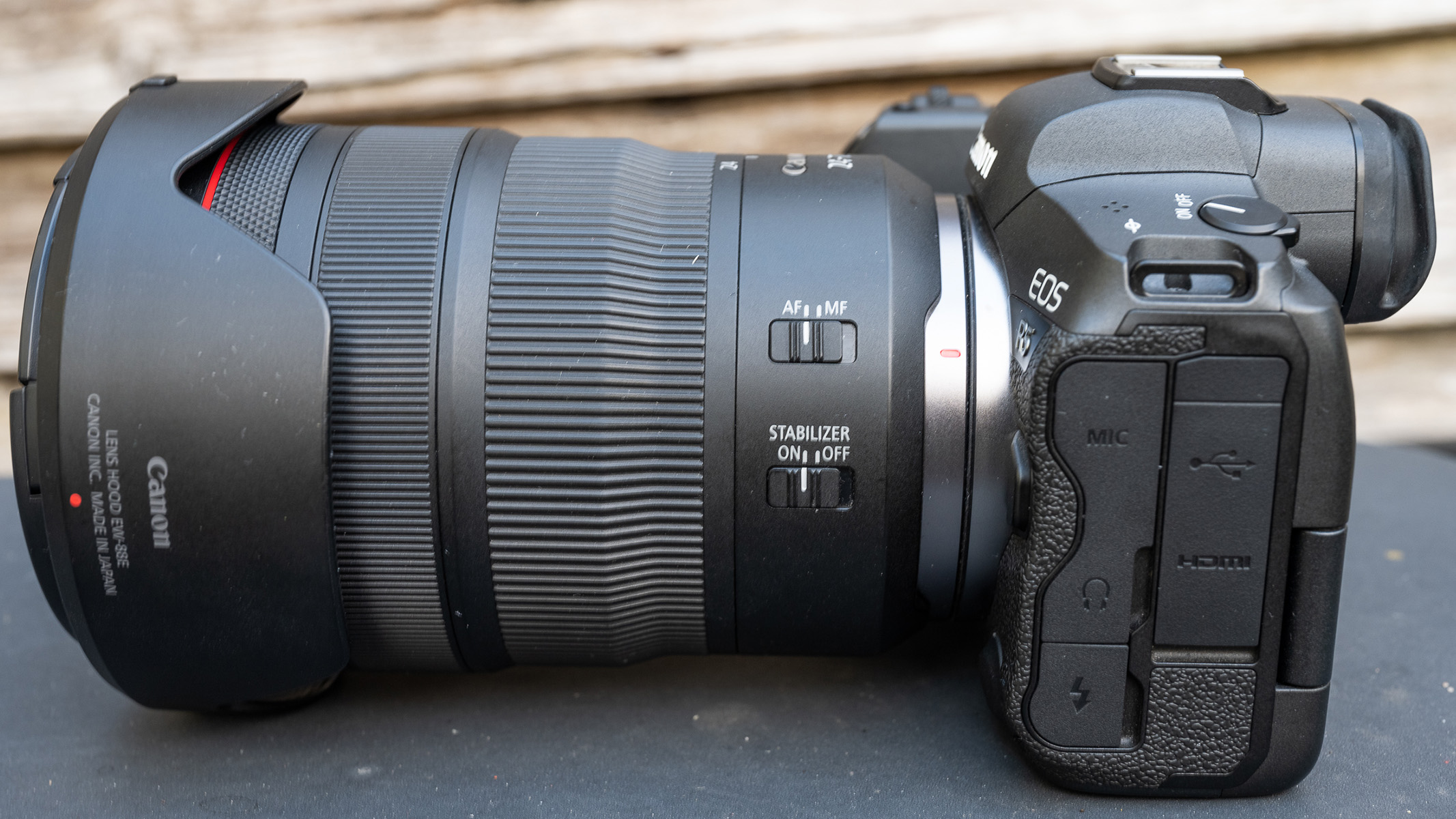
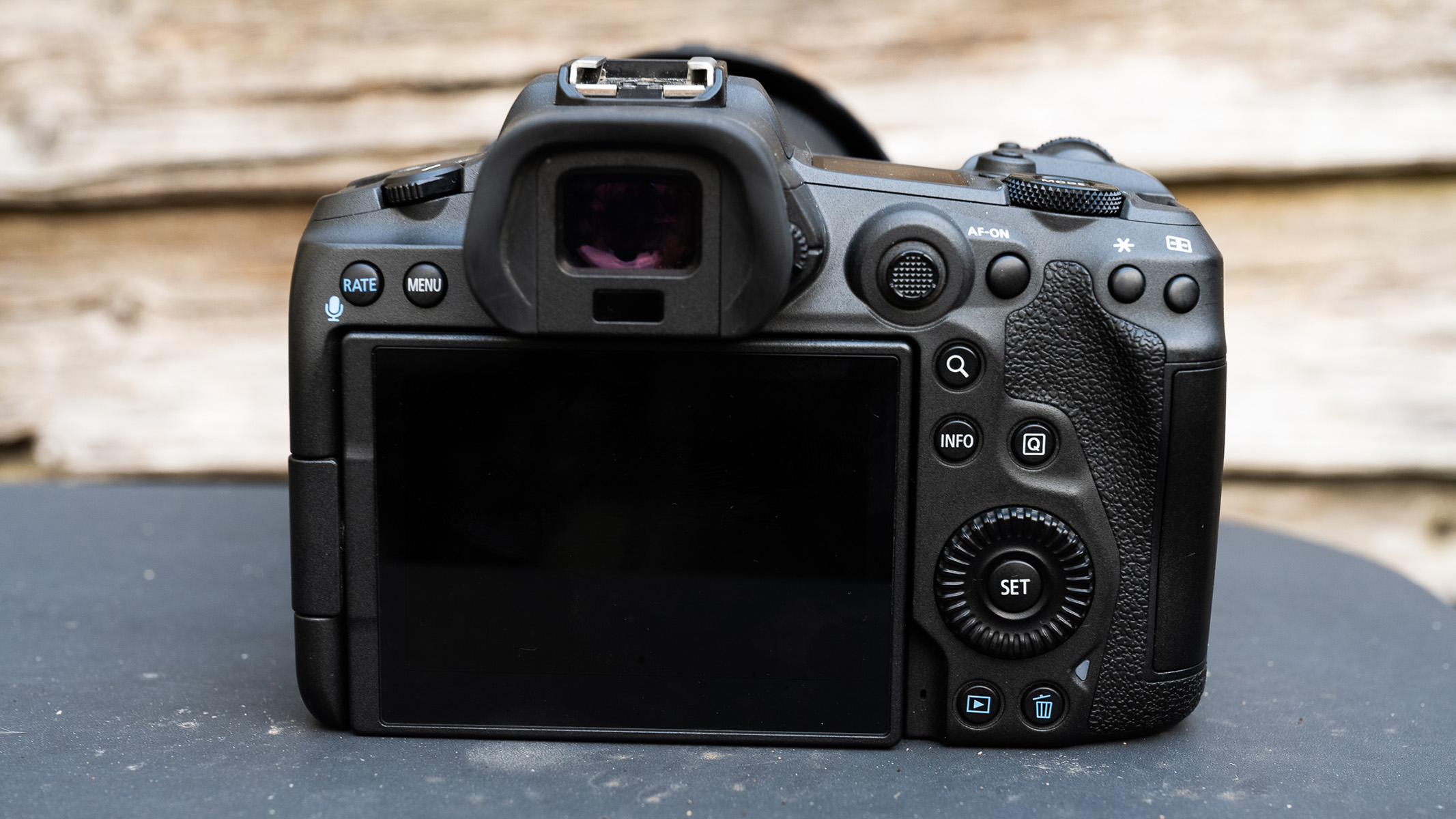
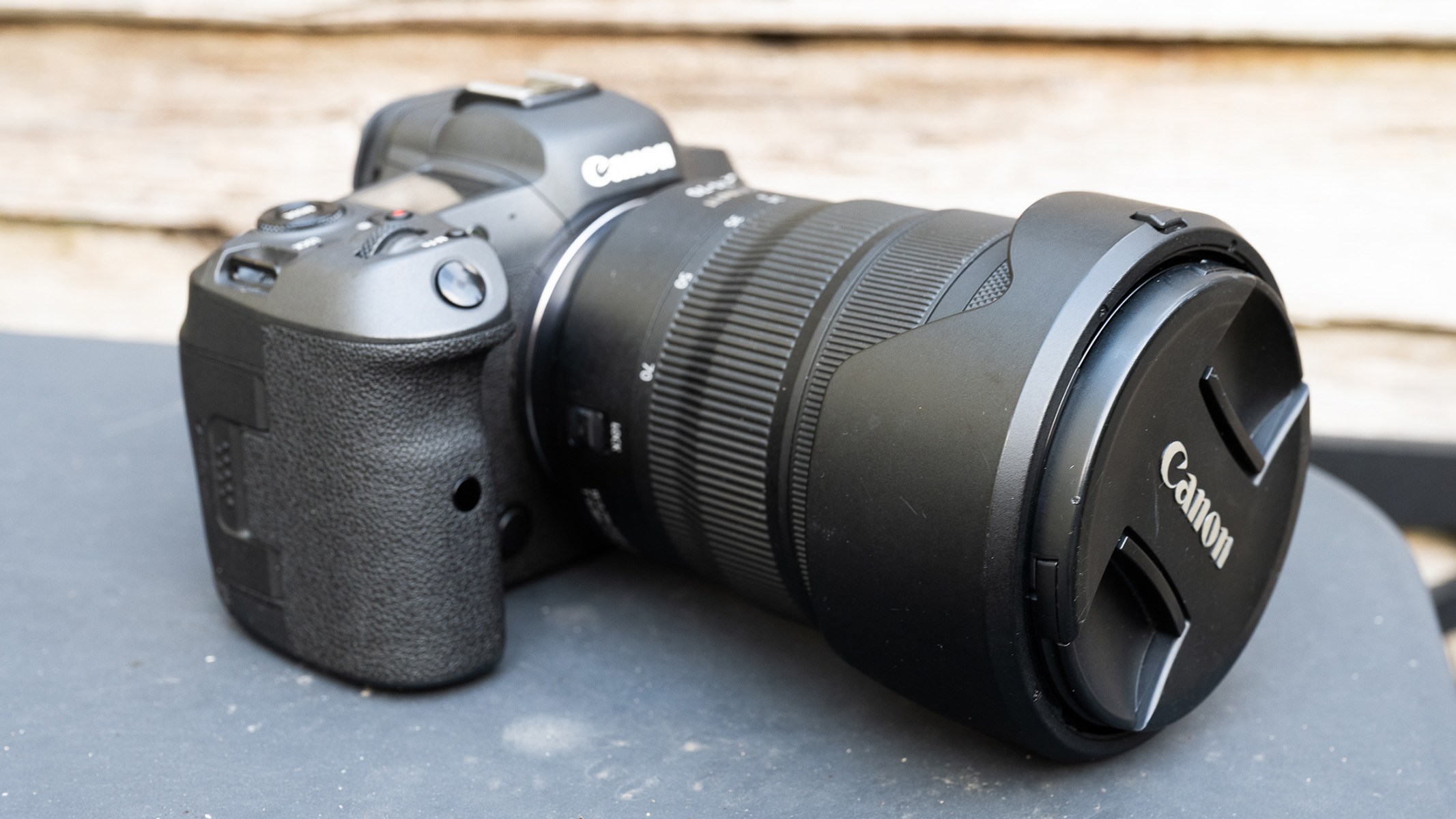
If we're looking purely at specs, then the Canon EOS R5 probably doesn't stack up against the Nikon Z8 and Sony A7R V on paper. However, that doesn't mean it doesn't deserve its place in this fight. The tech world is constantly evolving, and the R5 is an older camera than the other two, so naturally, it's not going to have the newest and most advanced technology out of the three.
That said, the Canon EOS R5 is still an incredibly impressive camera, and if you're reading this article because you already have a Canon and the choice is between simply switching the body to the R5 and jumping ship entirely to a whole new brand, then there are certainly reasons to choose the Canon over the other two models. You could argue that the R5 has stood the test of time more than the Sony A7R V or the Nikon Z8, despite newer advancements in technology since its release back in 2020.
Even though it doesn't necessarily win out against the other two mammoths in terms of specs, there isn't anything the Canon is bad at. When we reviewed the Canon EOS R5, we loved its handling and ergonomics and were incredibly pleased with its autofocus performance — in fact, that's one of the areas where it does win out. The Canon EOS R5 has 1053 AF points, whereas the Sony has 693 and the Nikon has 493. At the time of its release, it had one of the best and fastest autofocus systems we'd seen. Canon are also constantly improving their autofocus as time goes on, so that's something we could see in the R5 with future firmware updates.
Another totally valid reason to opt for the Canon R5 is if you don't necessarily need all the bells and whistles on the Nikon Z8 or Sony A7R V and you're already invested in the Canon system. Although all three models were at a very similar price when they were first released, being the oldest camera out of the three, right now the R5 is the cheapest by a few hundred dollars and is regularly on offer throughout various retail events throughout the year. We think that unless you're a working professional and you purely shoot astrophotography or people/events, it would be a lot of hassle, not to mention a lot of money to invest in an entirely new camera system plus a bunch of new lenses when the Canon EOS R5 is actually still a very impressive camera, even after all this time.
- Read our full Canon EOS R5 review
Verdict
| Winner | 2nd place | 3rd place |
|---|---|---|
| Nikon Z8 | Sony A7R V | Canon EOS R5 |
| ★★★★★ | ★★★★½ | ★★★★½ |
| Simply the best camera on the market at the moment, the Nikon Z8 is in a league of its own. | While the Nikon Z8 just pips it to the post, the Sony A7R V is the most capable Sony camera yet. | Still one of Canon's best cameras to this day, the EOS R5 is still a fantastic option if you don't need the newest tech. |
Having thoroughly tested and reviewed all three cameras, we think the Nikon Z8 wins here. It's an absolute beast in every aspect and will happily handle anything you throw at it with ease, and even though it may not win in every little specs battle, we think it certainly wins the war overall.
That said, we appreciate that buying a camera is an incredibly personal decision based on your own needs and preferences, so without wanting to sit on the fence, we think that any of these cameras would provide you with fantastic results regardless.
Join our Space Forums to keep talking space on the latest missions, night sky and more! And if you have a news tip, correction or comment, let us know at: community@space.com.

Kimberley Lane is a landscape & seascape photographer living in South Wales. Originally using photography as a way to cope with health issues, she aims to portray a feeling of calm and peace through her images. Her work has been featured in a number of national photography magazines.









